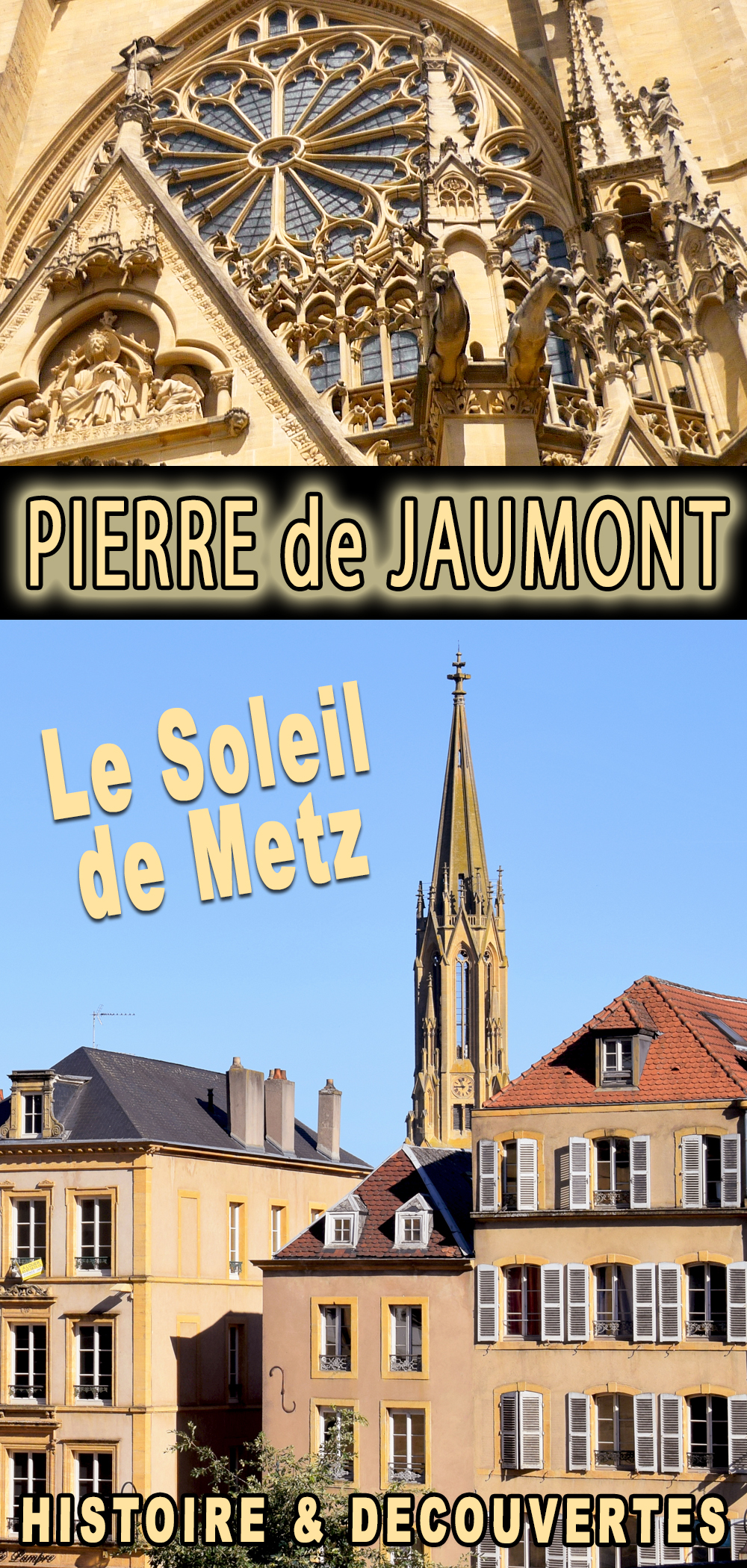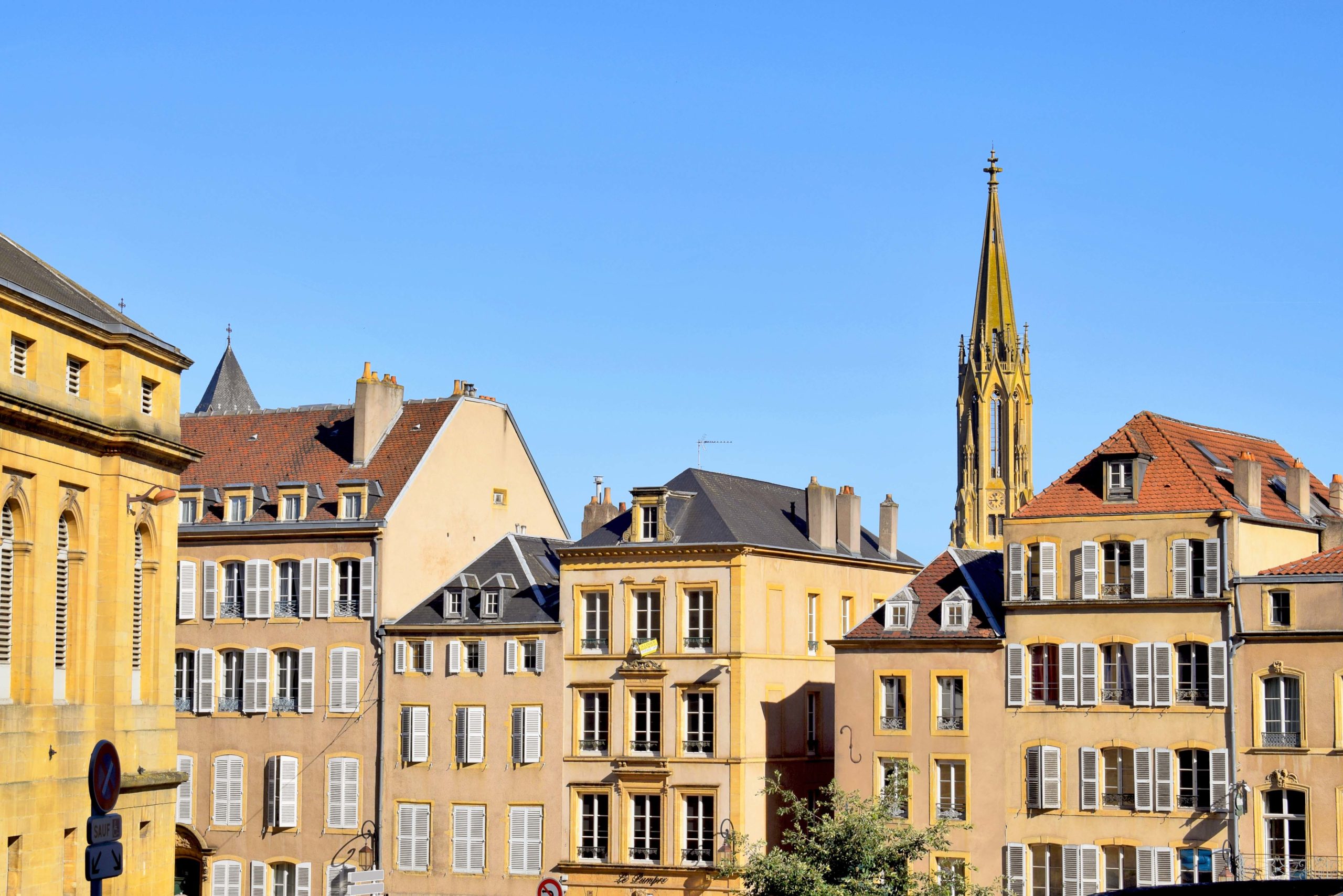The city of Metz is grey? Baliverne! OK, I admit that the sunshine in Moselle is not equivalent to that in Colmar or Marseille. But from there to give Metz an unflattering term… Because although the sun may be lacking in Metz, the assets of the Moselle city are largely visible to the naked eye. If only for the colour of its facades. Have you heard of the “Soleil de Metz”? It refers to the Jaumont stone, the characteristic building stone of the city that gives it such an elegant appearance. So, follow me in my exploration of the famous golden stone that makes the city so beautiful… and let’s twist the conceived ideas along the way!
What is the Jaumont stone?
According to Wikipedia, the Jaumont stone is an oolitic limestone (spheres of 1 mm in diameter). It is a semi-tender stone with a medium-density (2.5 to 2.7), which makes it relatively easy to cut.
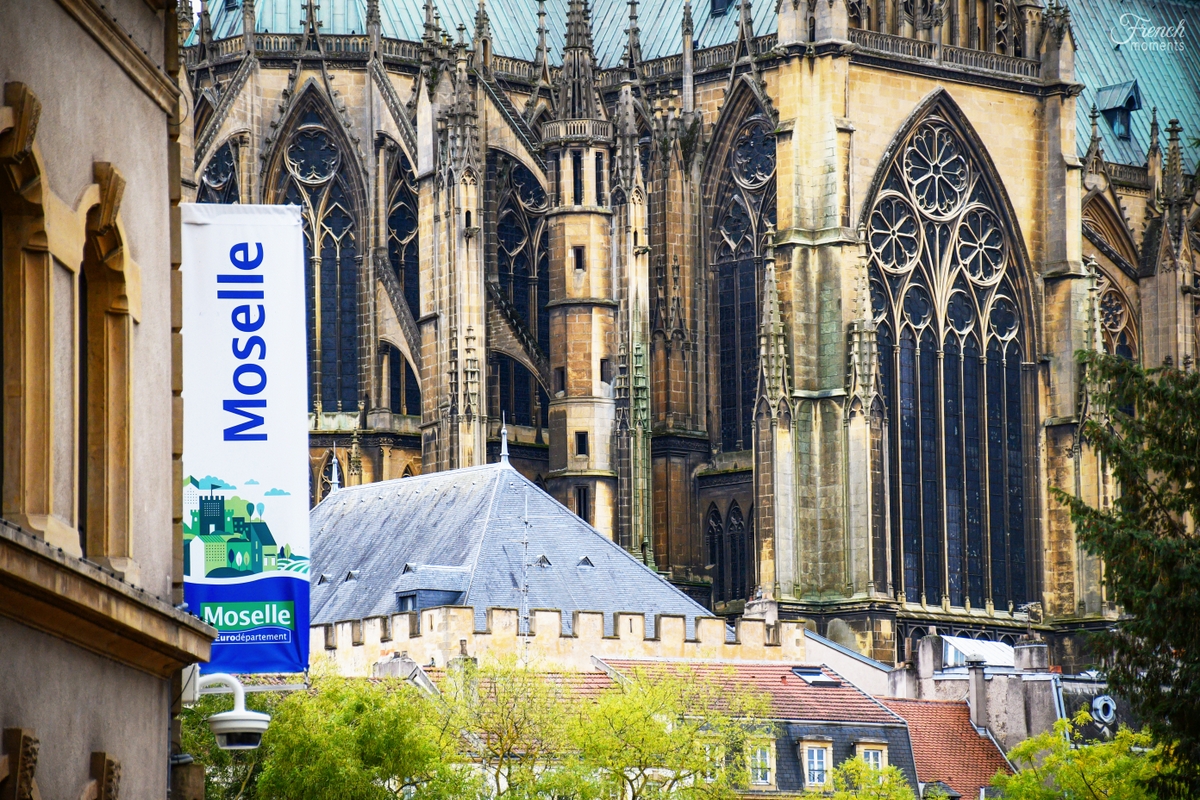
Why the name ‘Jaumont’?
Unlike Euville stone, Jaumont stone does not bear the name of a village or locality.
Jaumont is in fact a contraction of “Jaune Mont” (Galbinus Mons in Latin – the yellow mountain), a name that is naturally due to the yellow colour of the stone.
Jaumont stone is mined in quarries in the Moselle region, some fifteen kilometres northwest of Metz.
It is a deposit located above former disused iron ore mines and covers about 200 hectares in one piece. These are the banks of the following localities:
- Malancourt-la-Montagne,
- Montois-la-Montagne,
- Moyeuvre-Grande,
- Roncourt and
- Saint-Privat-la-Montagne.
Why is Jaumont stone yellow?
It is the iron oxide present in the mines that gives Jaumont stone its “golden yellow” colour. The chromatic term for the colour is “yellowish ochre”.
My childhood memories of Metz (1980s) are of yellow stone facades blackened by time. The cathedral portal with its statues was an unattractive yellow-black colour. The delightful Place Saint-Louis was not particularly attractive with its yellow-brown facades. I learned much later that the blackening of the stone was due to atmospheric pollution, which had been occurring since the beginning of the 20th century. Restoration and refurbishment campaigns undertaken in the early 1990s have returned the stone to its golden shine.

The history of Jaumont stone in Lorraine
It is known that the Gallo-Romans exploited the Jaumont quarries at least from the 2nd century AD. This is evidenced by the sarcophagi and funerary steles discovered in the archaeological sites in Metz.
The golden age of stone dates from the 13th and 14th centuries. It was used to build Metz Cathedral and large churches in the region.
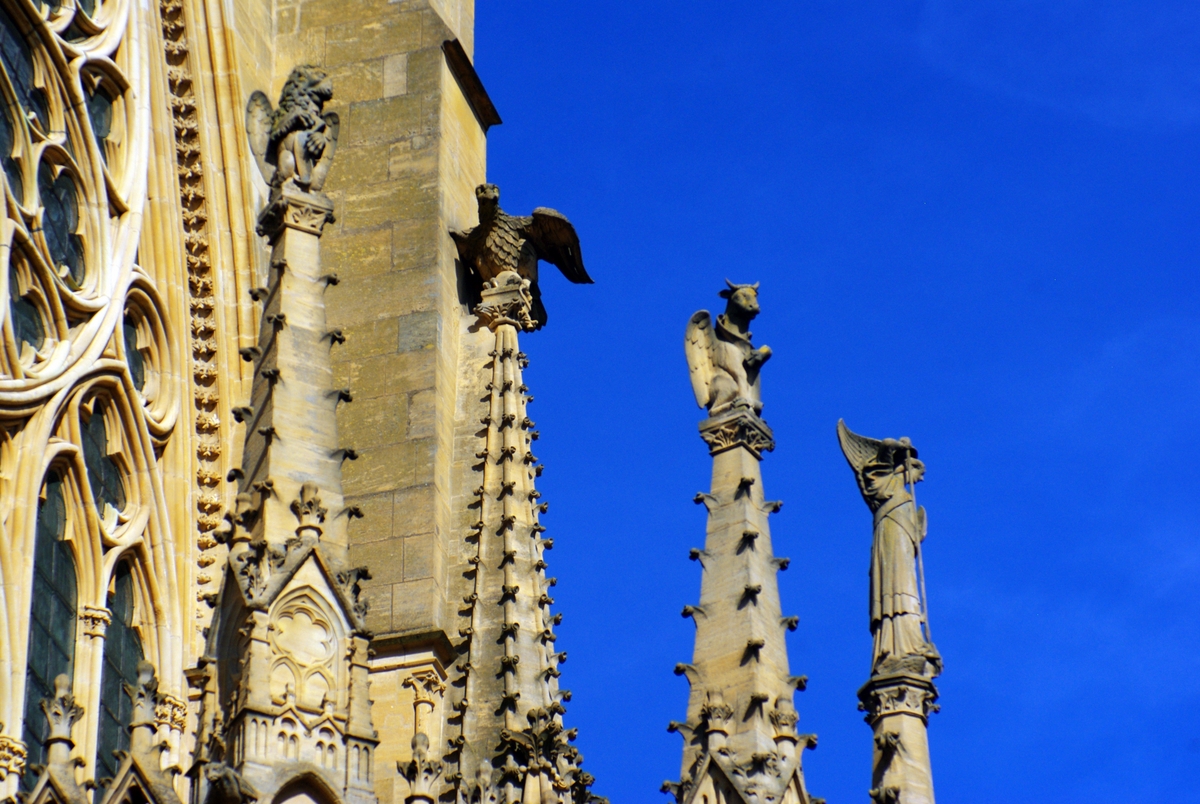
Jaumont stone in Metz
Jaumont stone is THE emblematic stone of Metz. It is found in many buildings, including the city’s most famous monuments:
The cathedral Saint-Etienne de Metz
One of the most beautiful cathedrals in France. Nicknamed the “Lantern of God”, it has the largest surface area of stained glass in France.
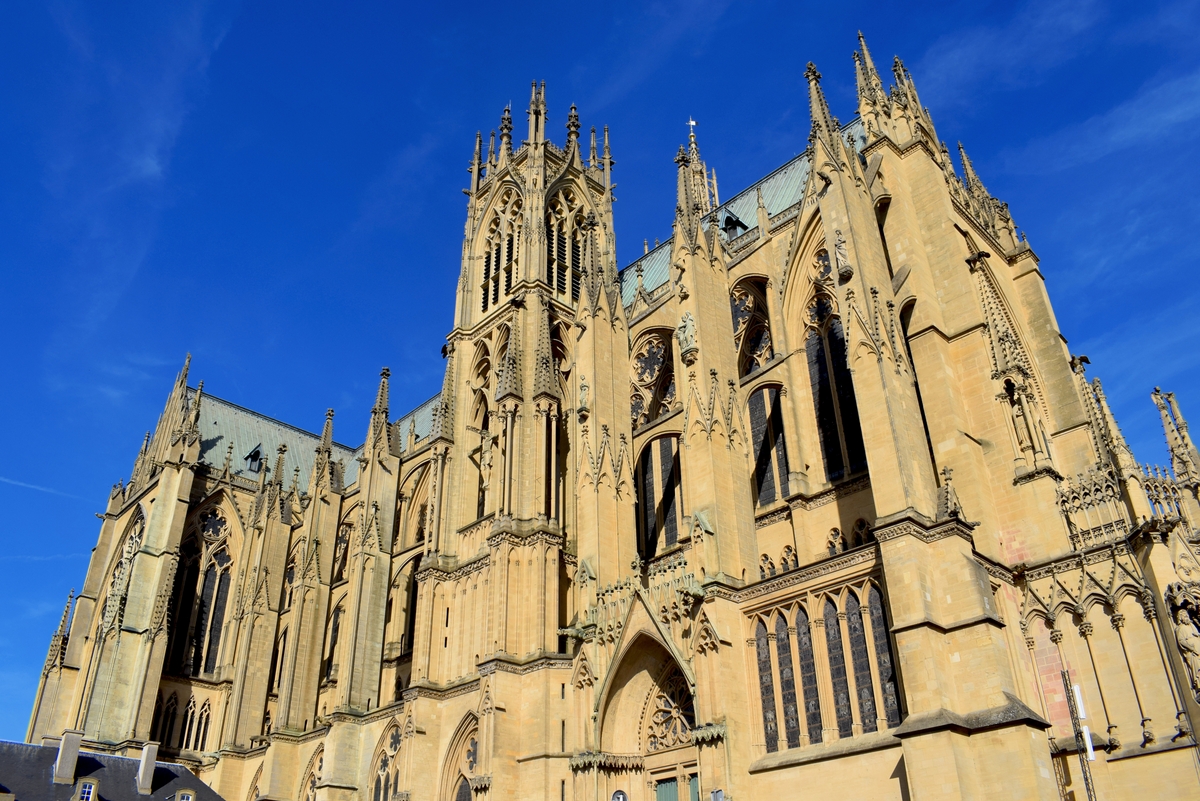
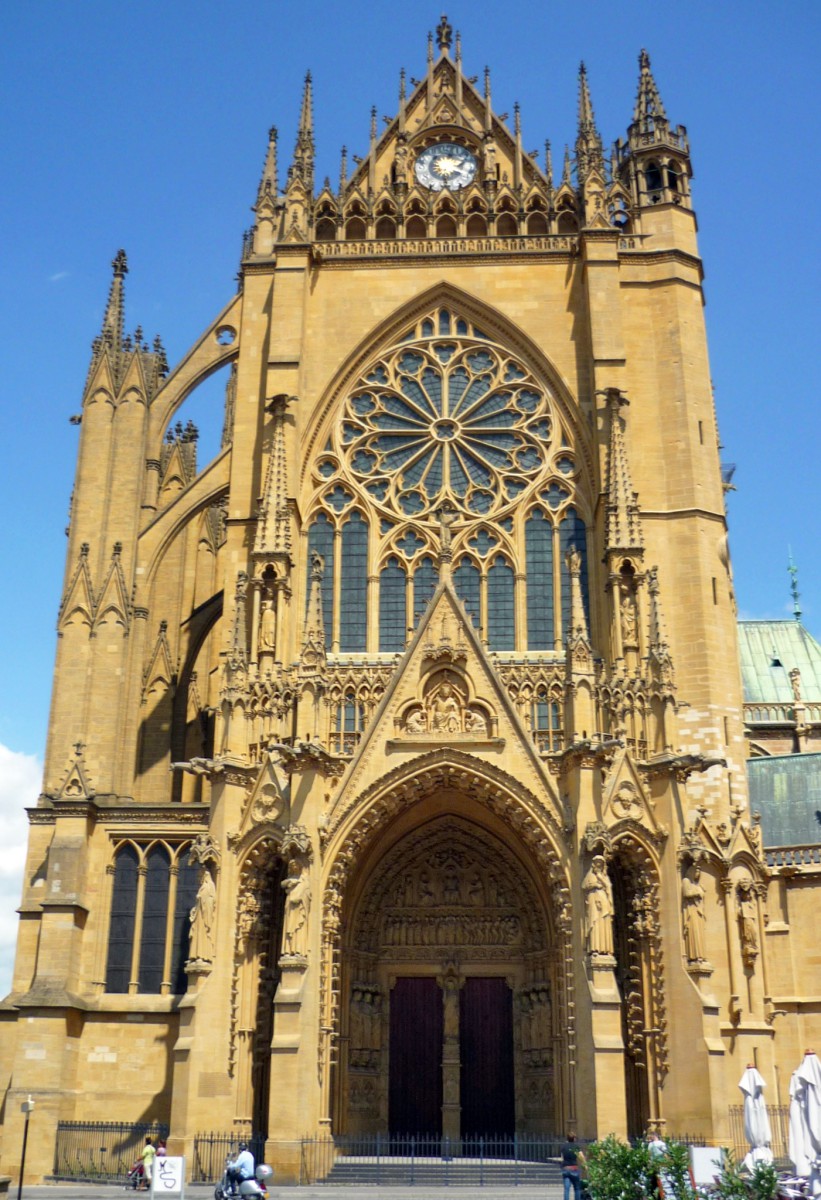
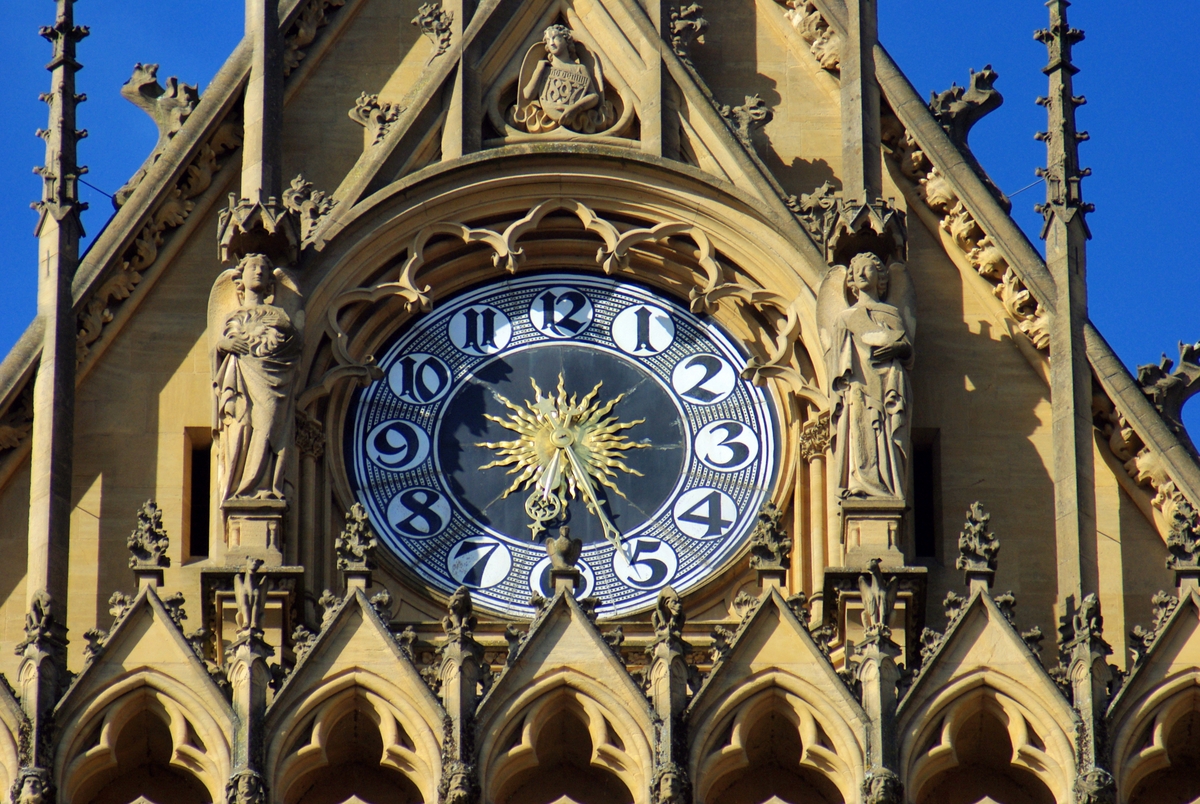
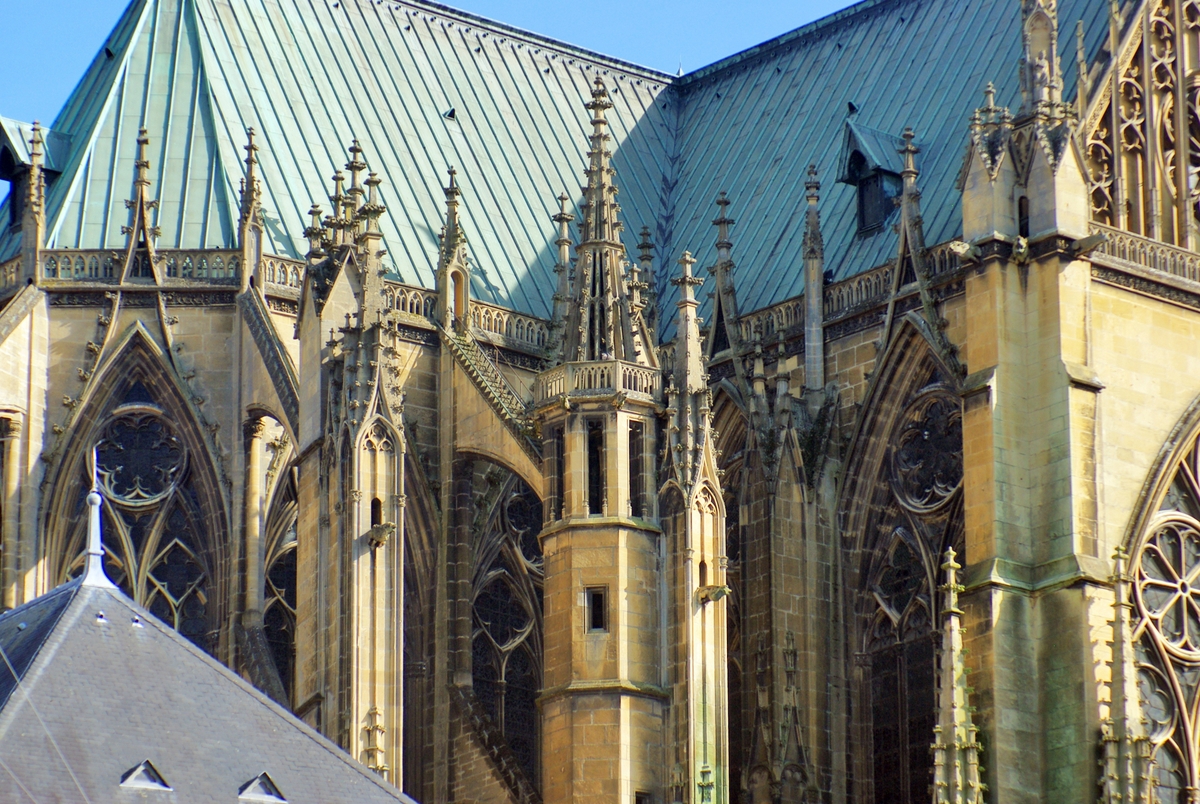
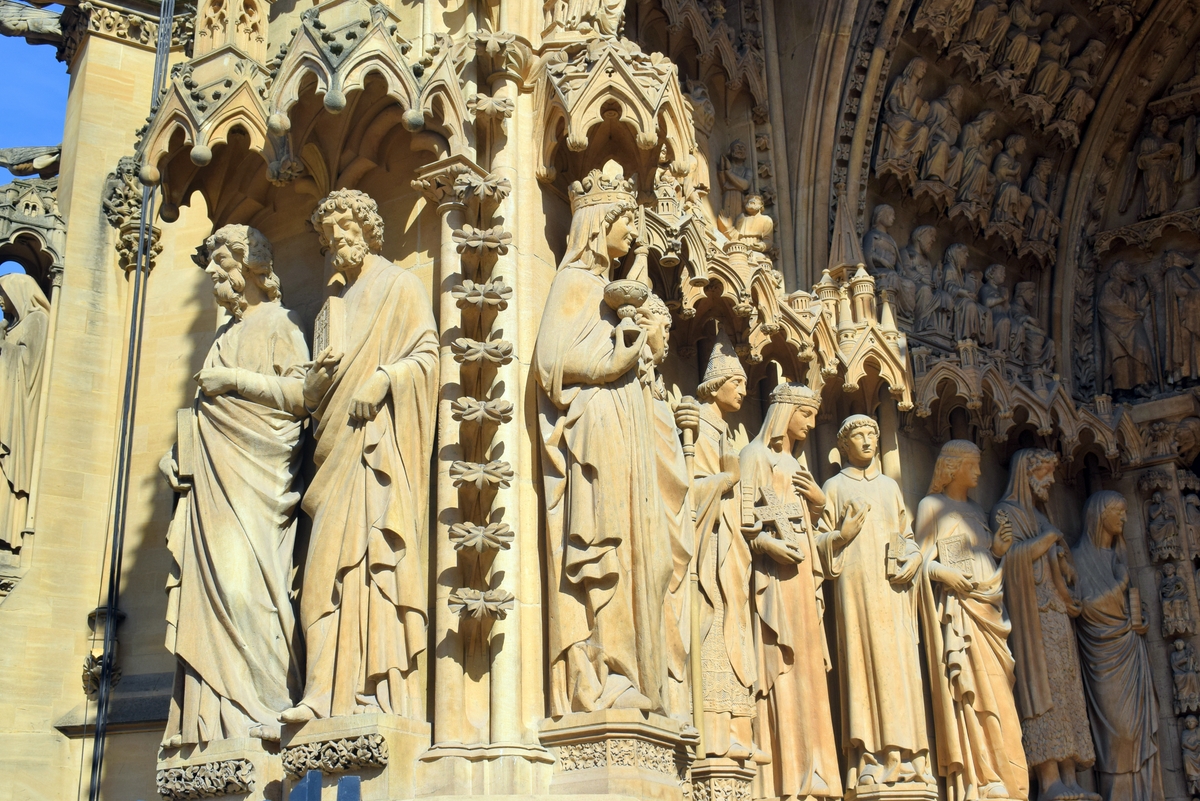
Place d’Armes
The cathedral square is called the Place d’Armes. Designed in the 18th century by the architect Jacques-François Blondel, it is lined with neo-classical buildings in Jaumont stone:
- the town hall
- the guardhouse, which today houses the Metz tourist board
- the Hôtel du Parlement
On the direct outskirts of the Place d’Armes stands the covered market, which in the 18th century was destined to become the bishop’s palace.
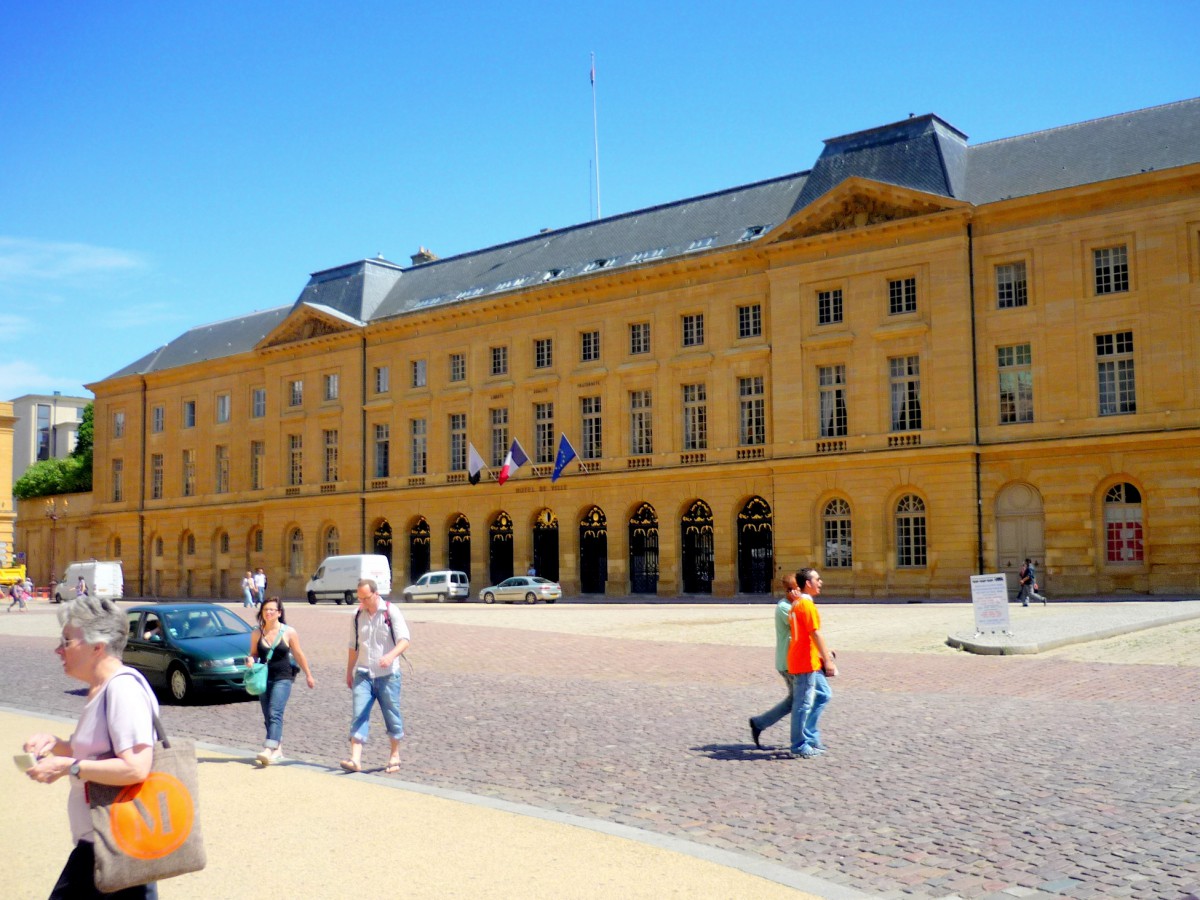
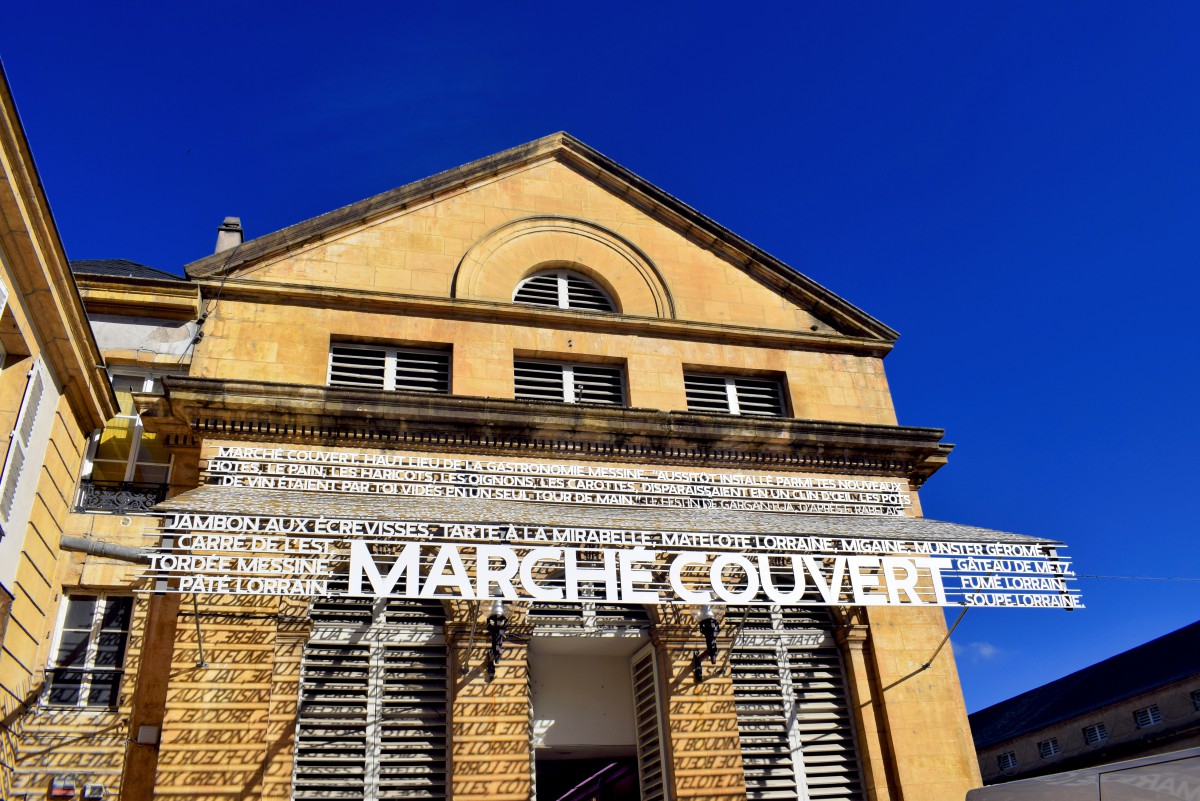
The Palais de Justice
(1777) with its three imposing U-shaped buildings.
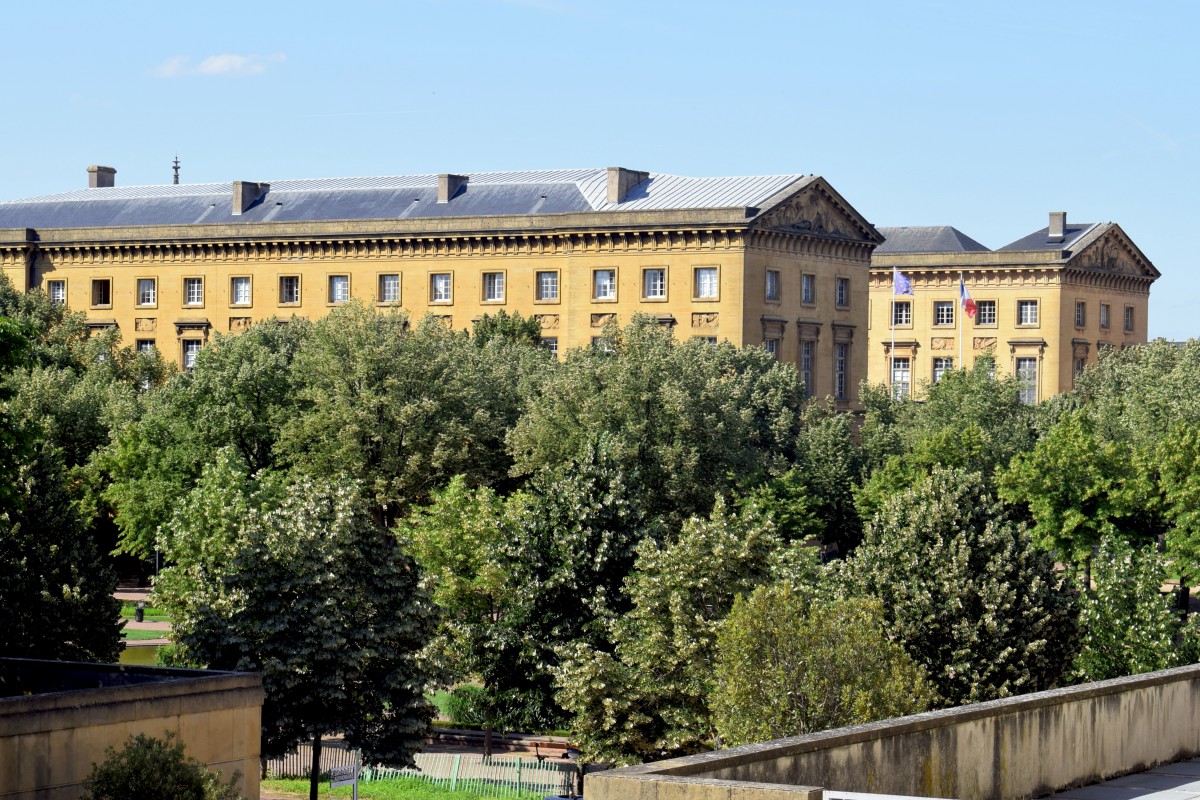
The Porte des Allemands
A medieval castle spanning the Seille on the road to Germany.
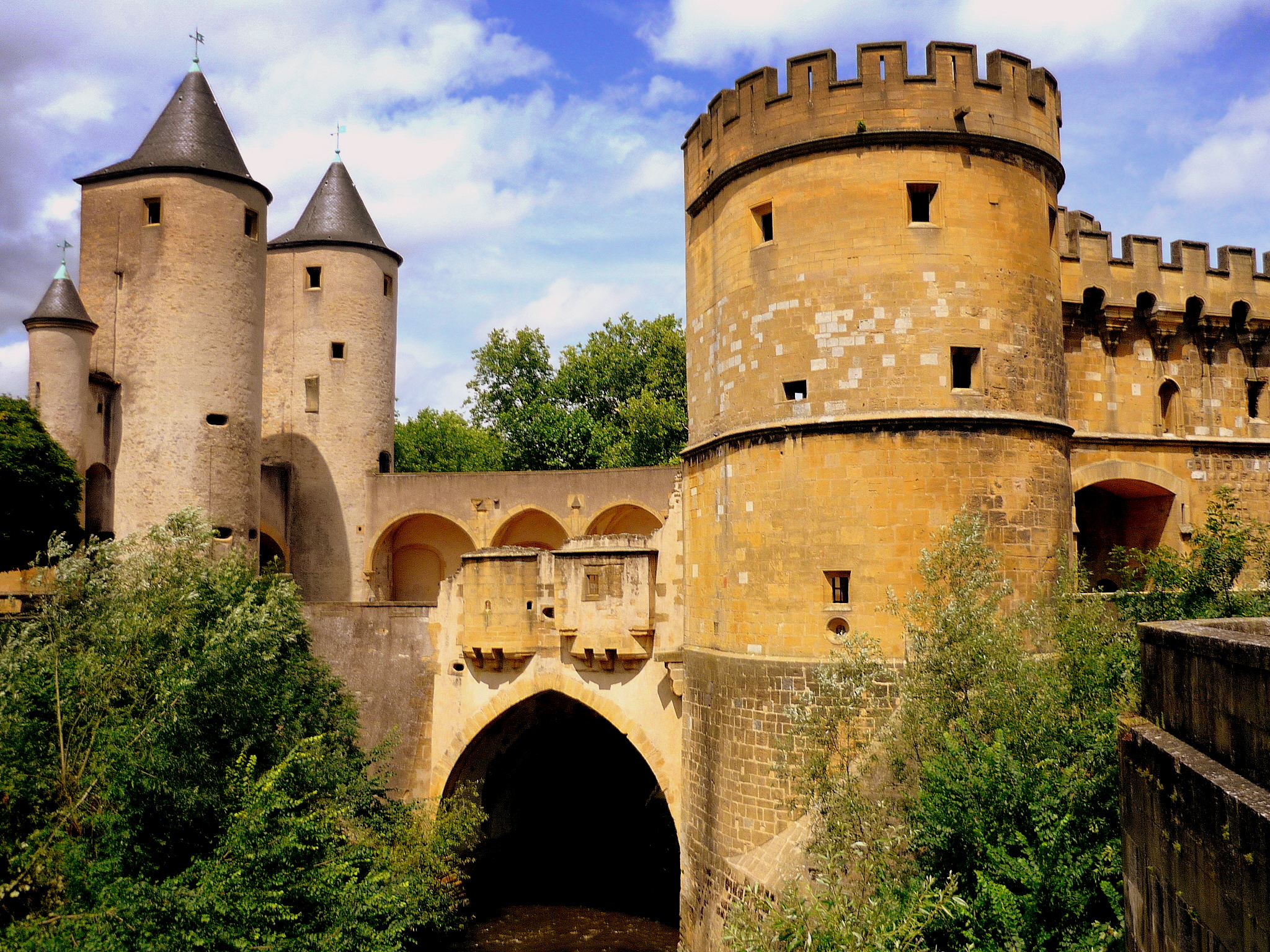
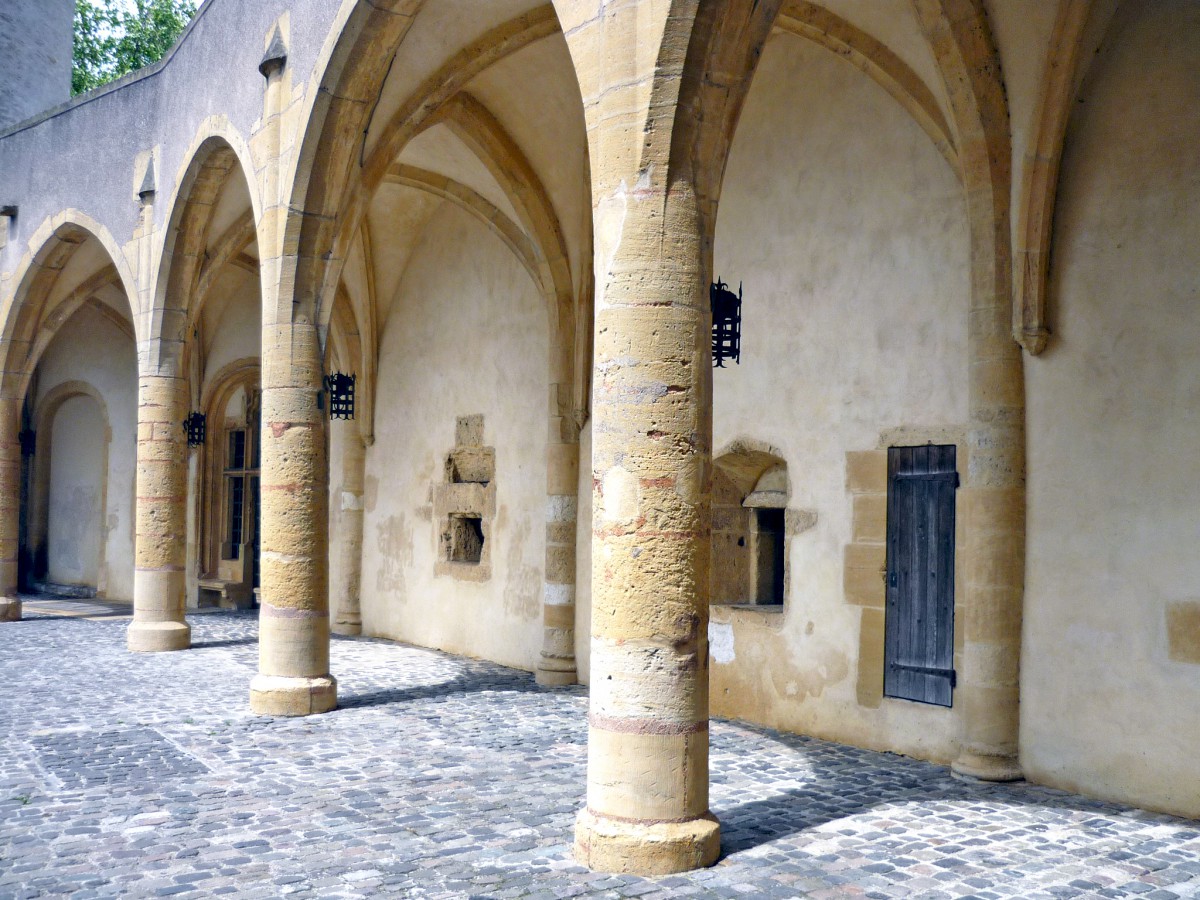
The Metz opera theatre
Situated on the Place de la Comédie, is one of the first theatres built in France (1752) and the oldest theatre still in operation.

Place Saint-Louis
The medieval Place Saint-Louis and its arcades houses.
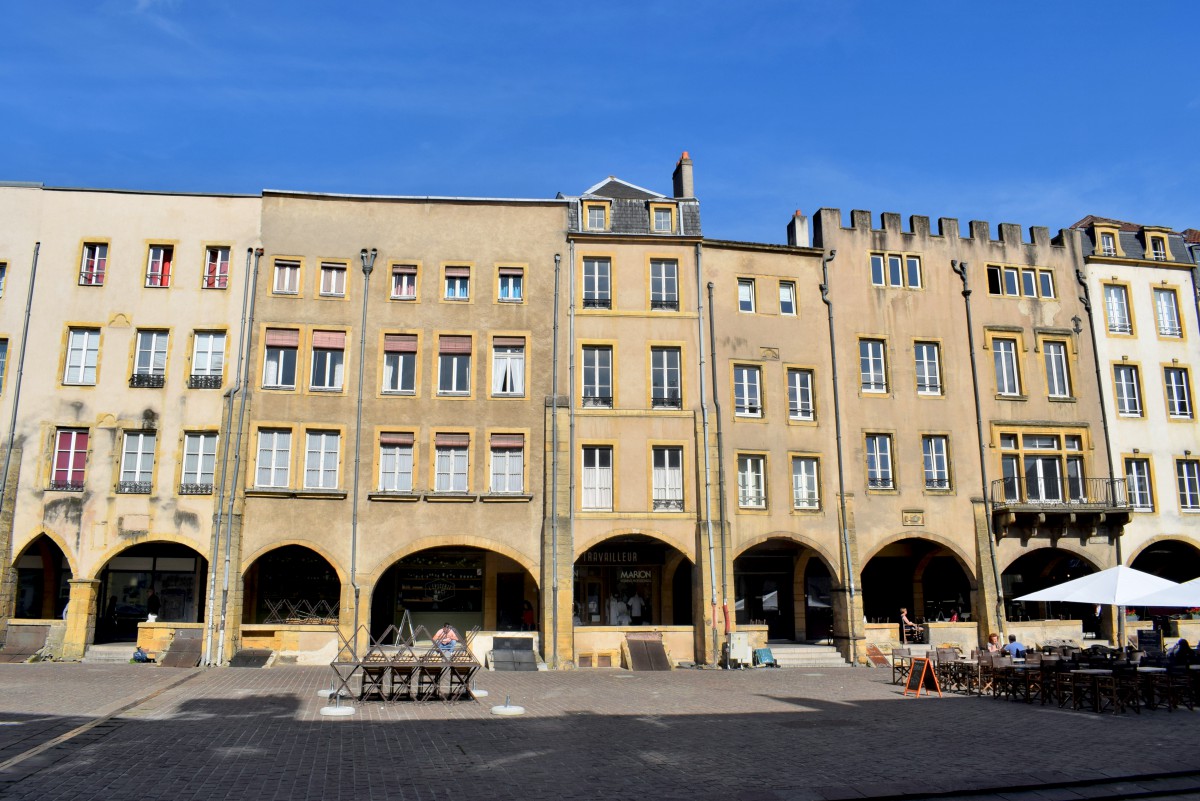
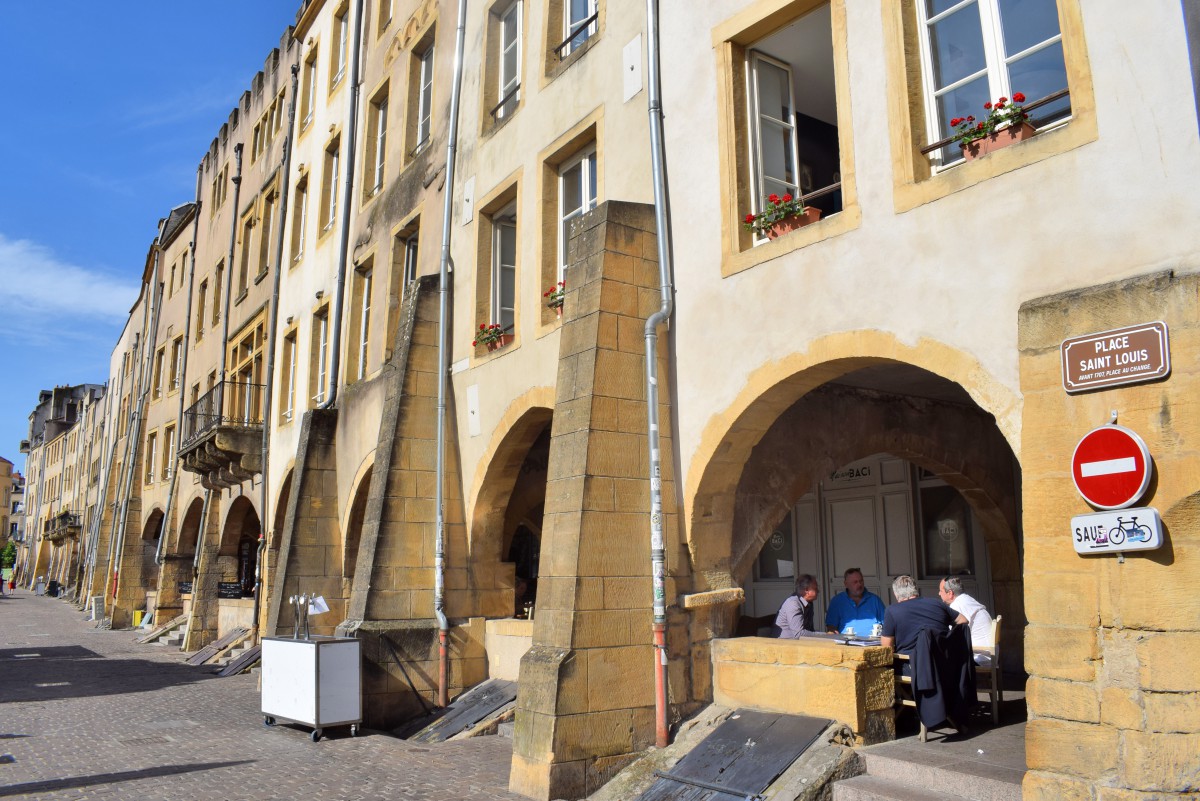
The Palais du Gouverneur of Metz
Inaugurated in 1905, it is a neo-Renaissance palace built during the German annexation.
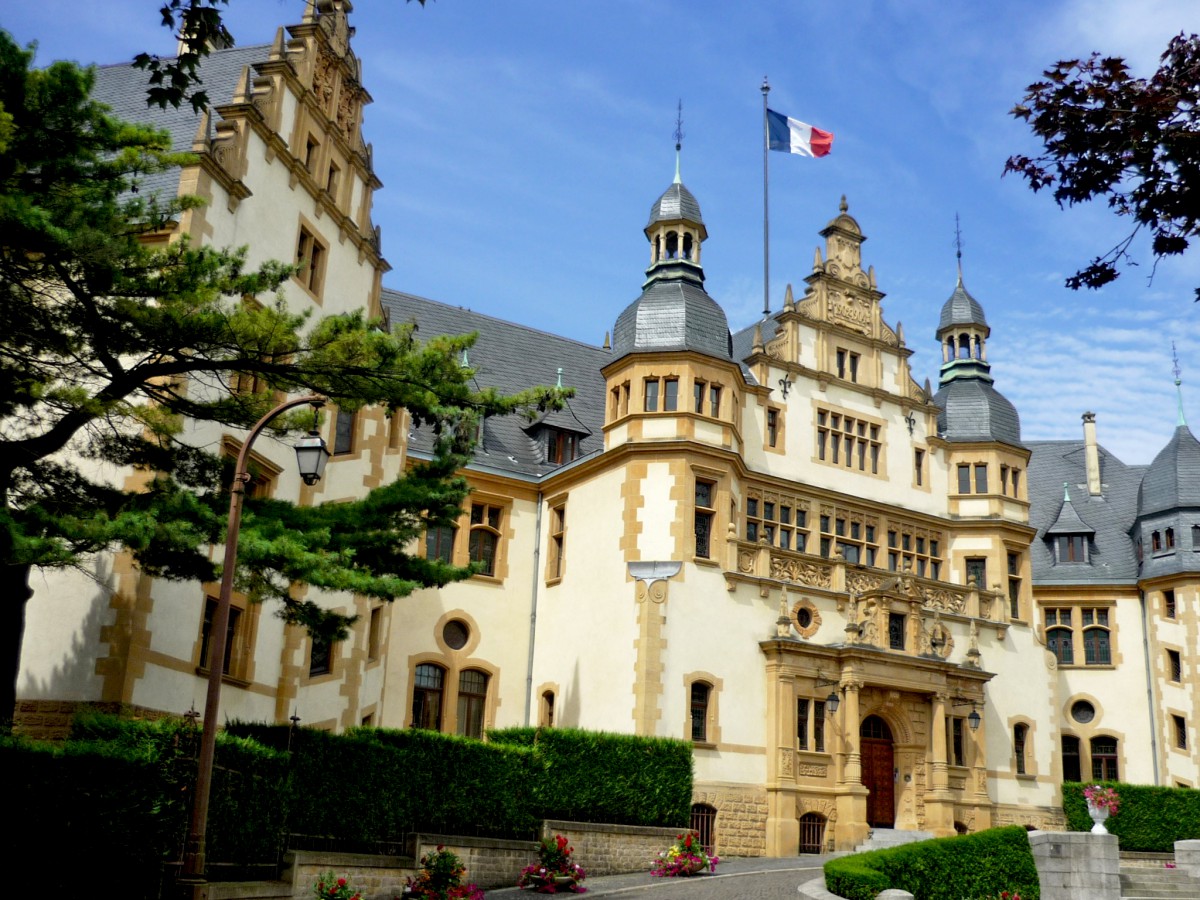
The Garrison Church
The church dates from 1881 and was intended for the German Lutheran soldiers based in Metz. The church was built in the same style (Rayonnant Gothic) and material (Jaumont stone) as the Cathedral. The supreme affront was the bell tower, whose spire (97 m) is one metre higher than that of the cathedral… The church was severely damaged during the bombings of the Second World War. The church was severely damaged during the bombings of the Second World War and only the spire was preserved after it was destroyed in 1952.
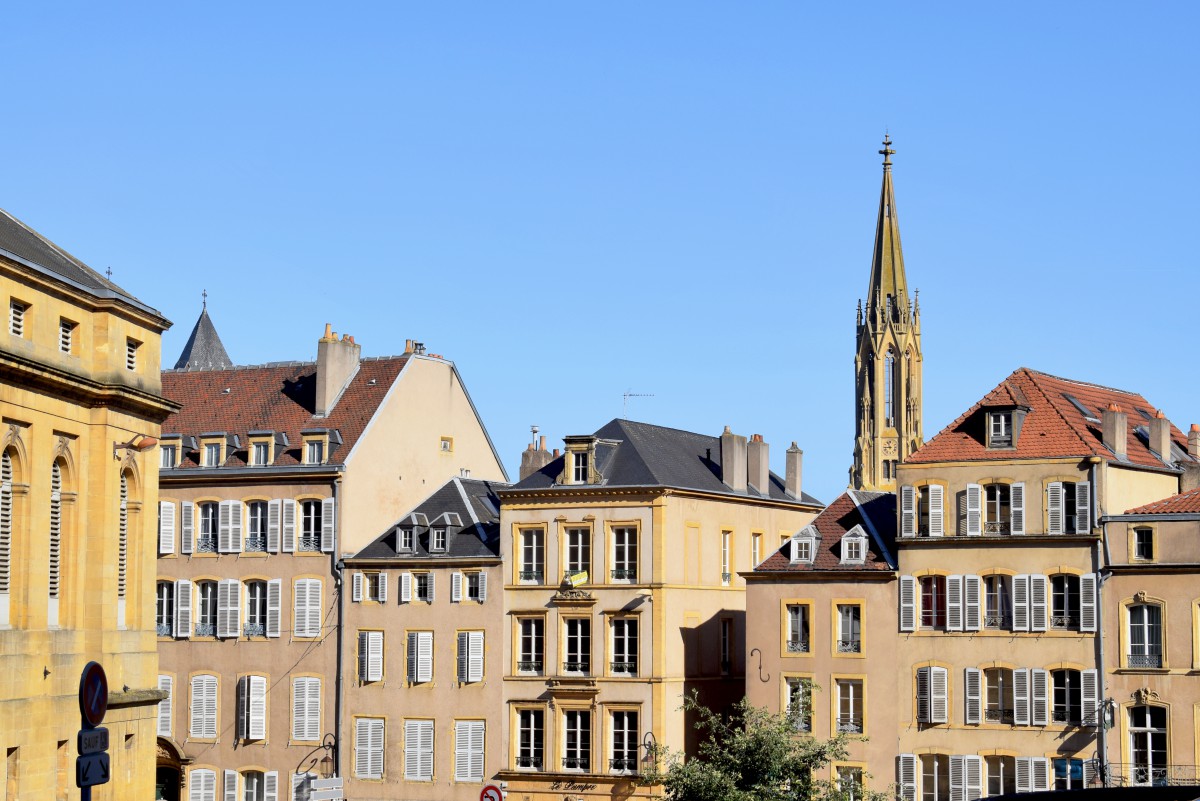
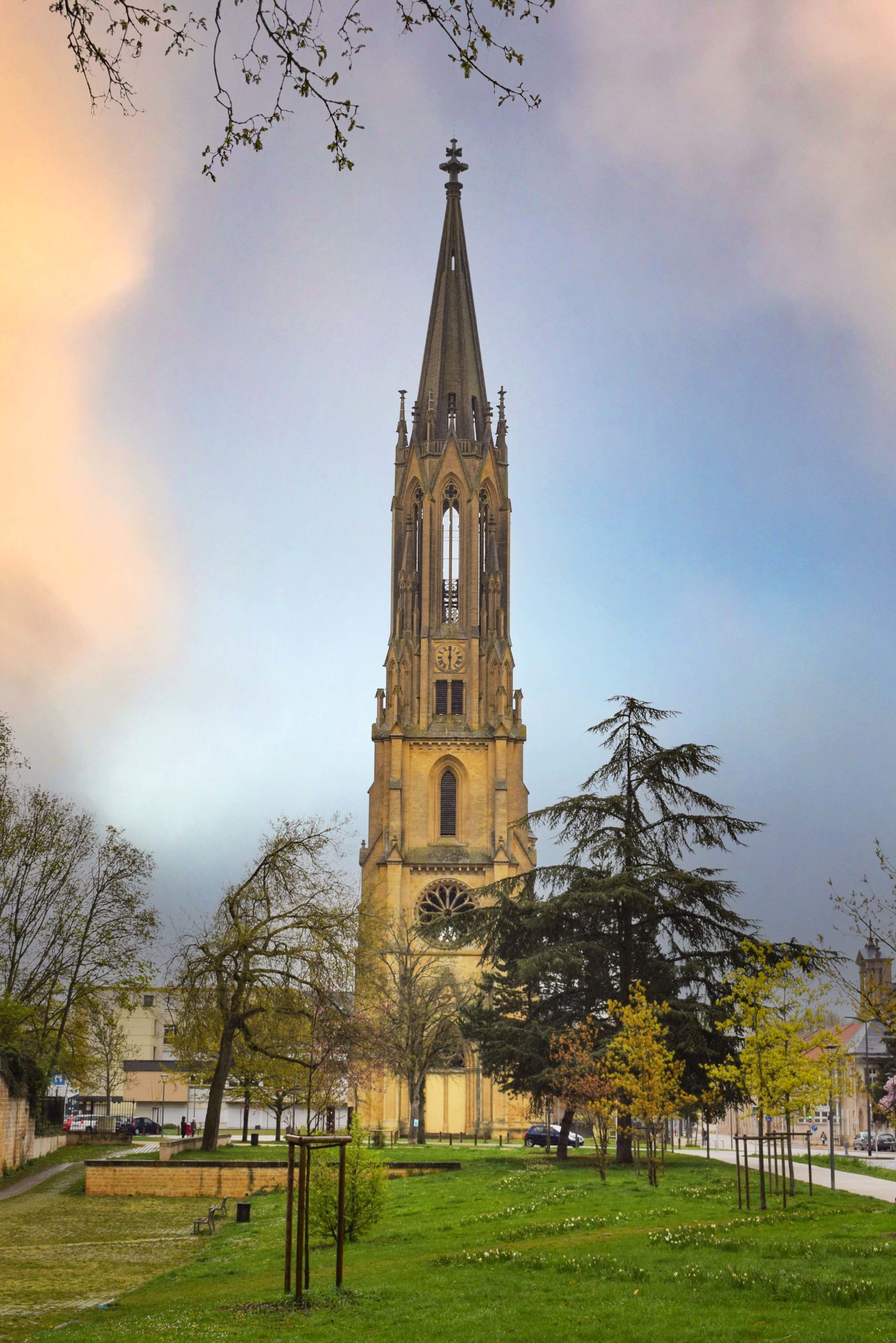
Metz Railway Station
Parts of the interior of Metz railway station are made of Jaumont stone. The station as a whole is built of pale grey Niderviller sandstone.
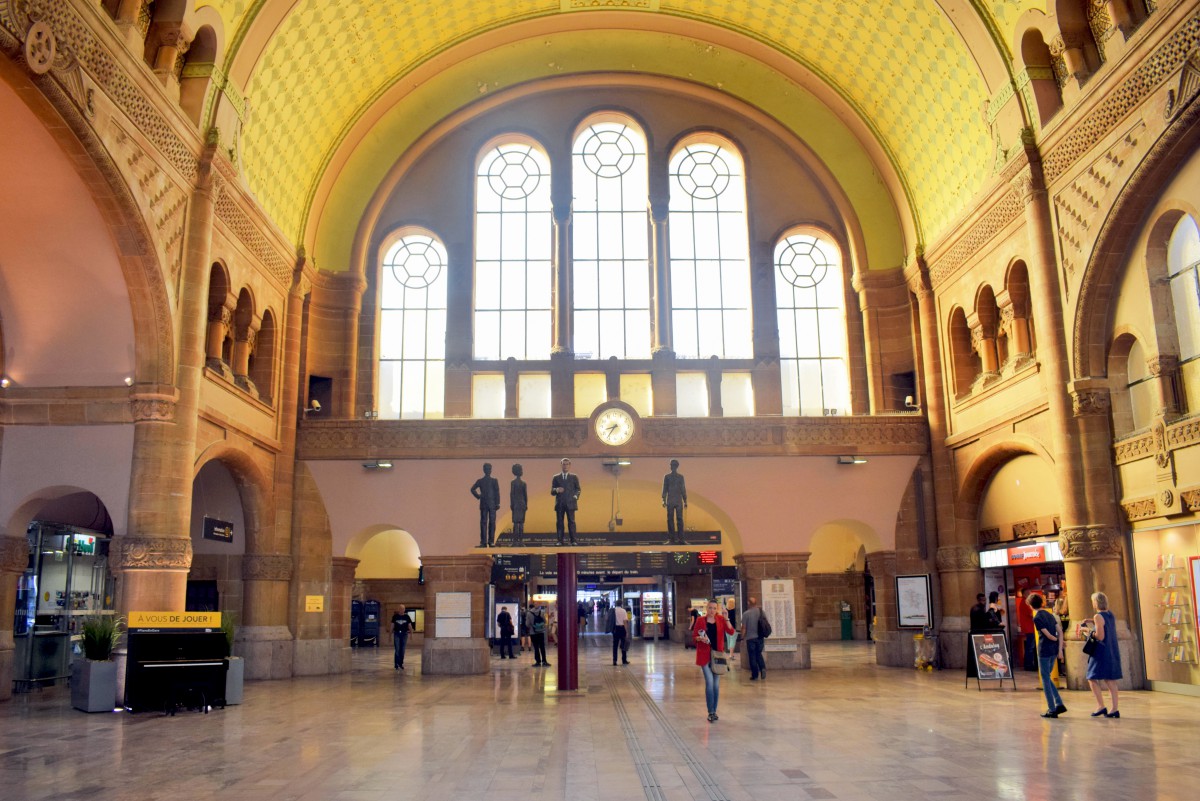
The bridges of Metz
Moyen-Pont and Grand pont des Morts…
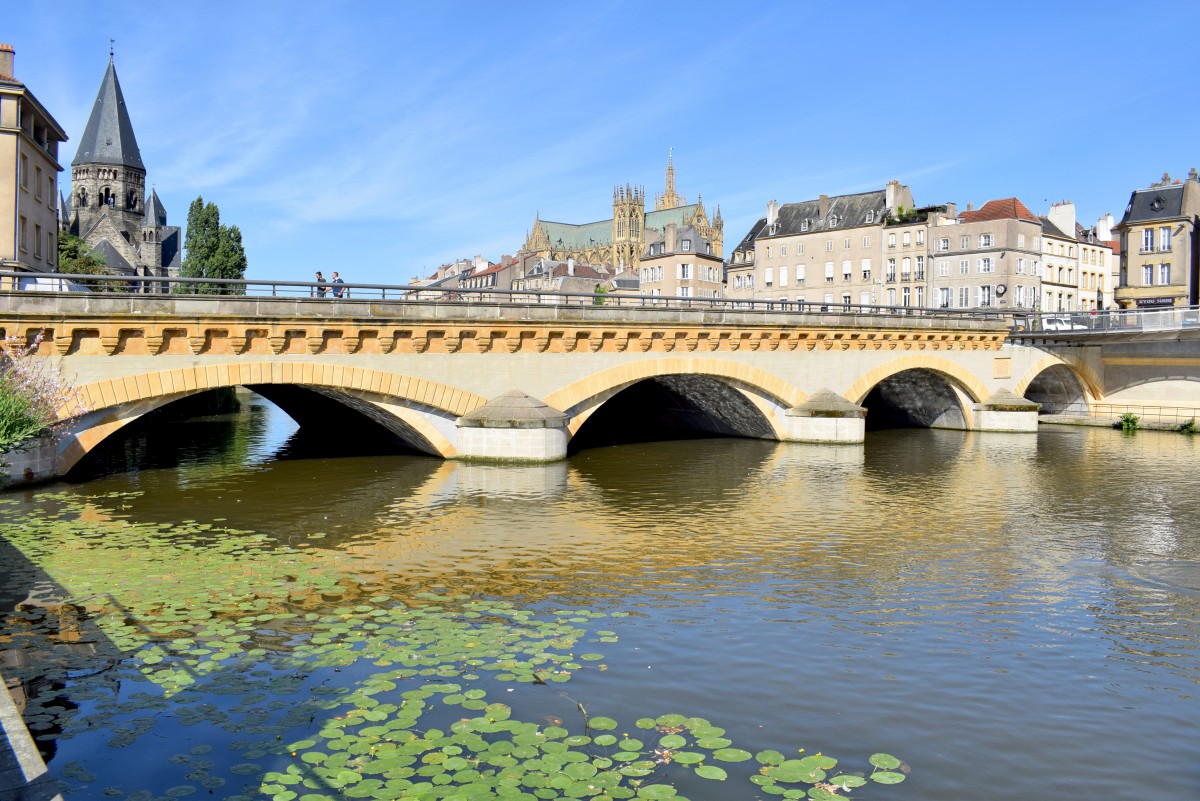
The churches of Metz
Notre-Dame, Saint-Martin, Sainte-Ségolène…
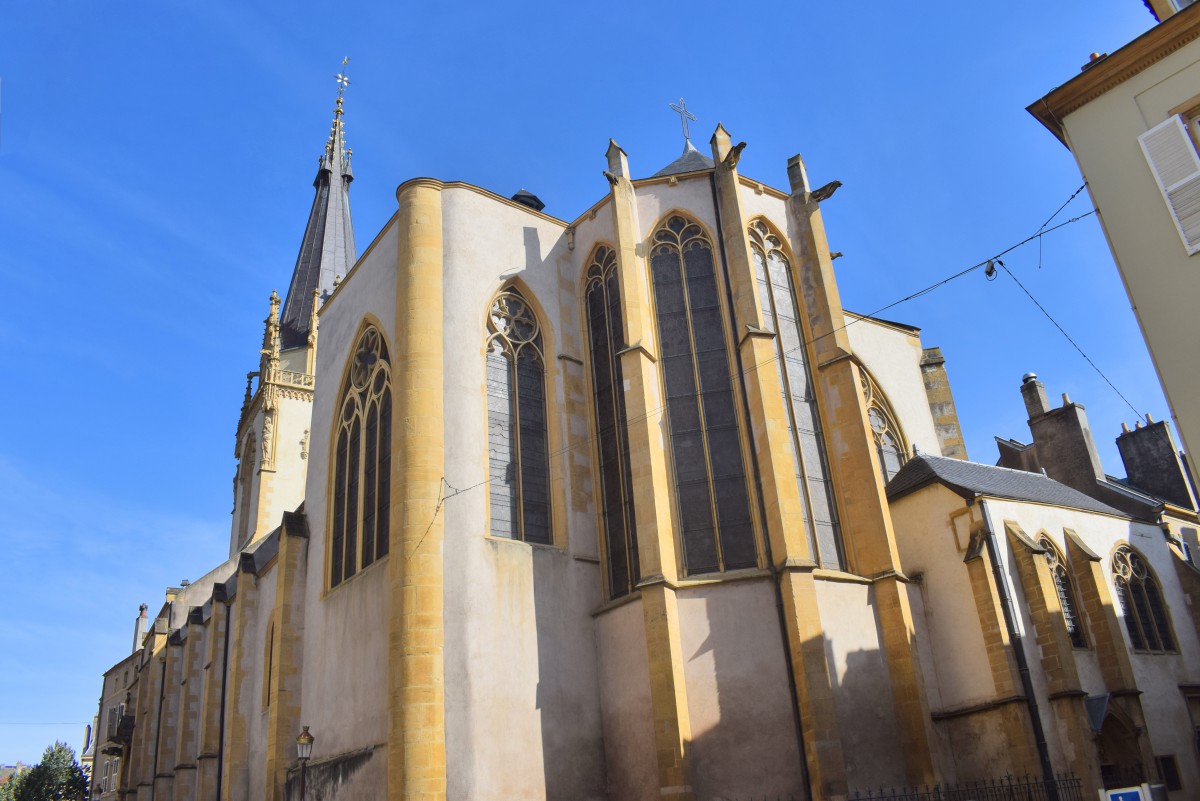
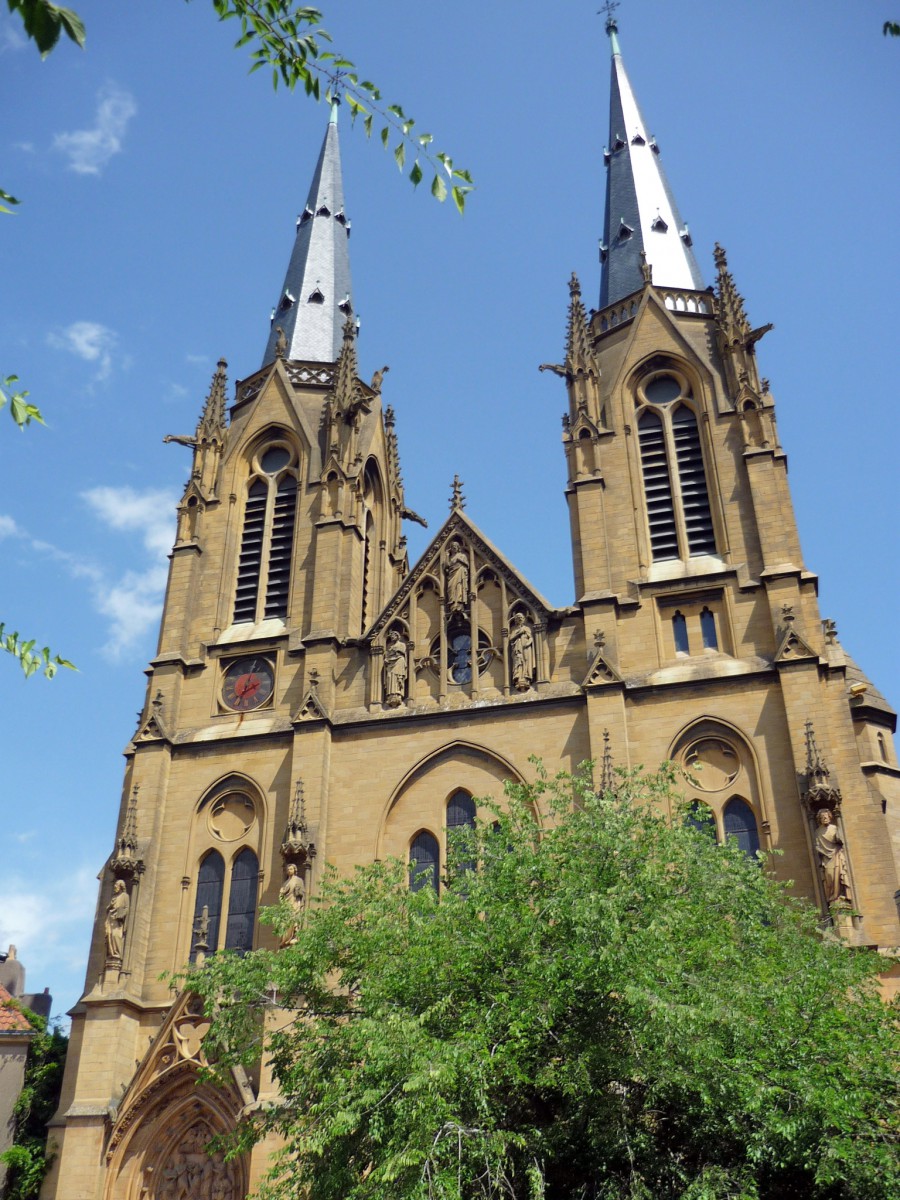
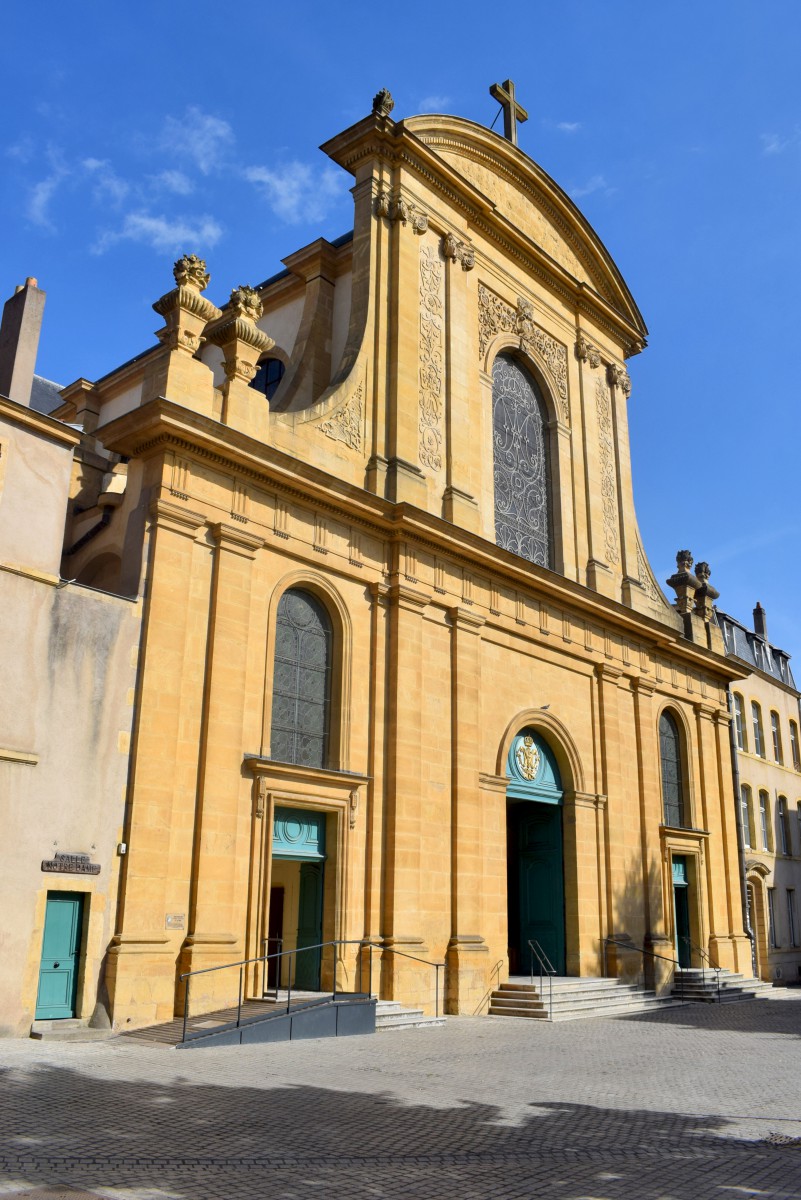
Buildings in the old town
Many buildings in the old town are covered with beige or brown rendering. Jaumont stone appears in contrast in the ochre-yellow frames of doors and windows. This characteristic feature can be found in several communes in the Metz region and in the Thionville area.
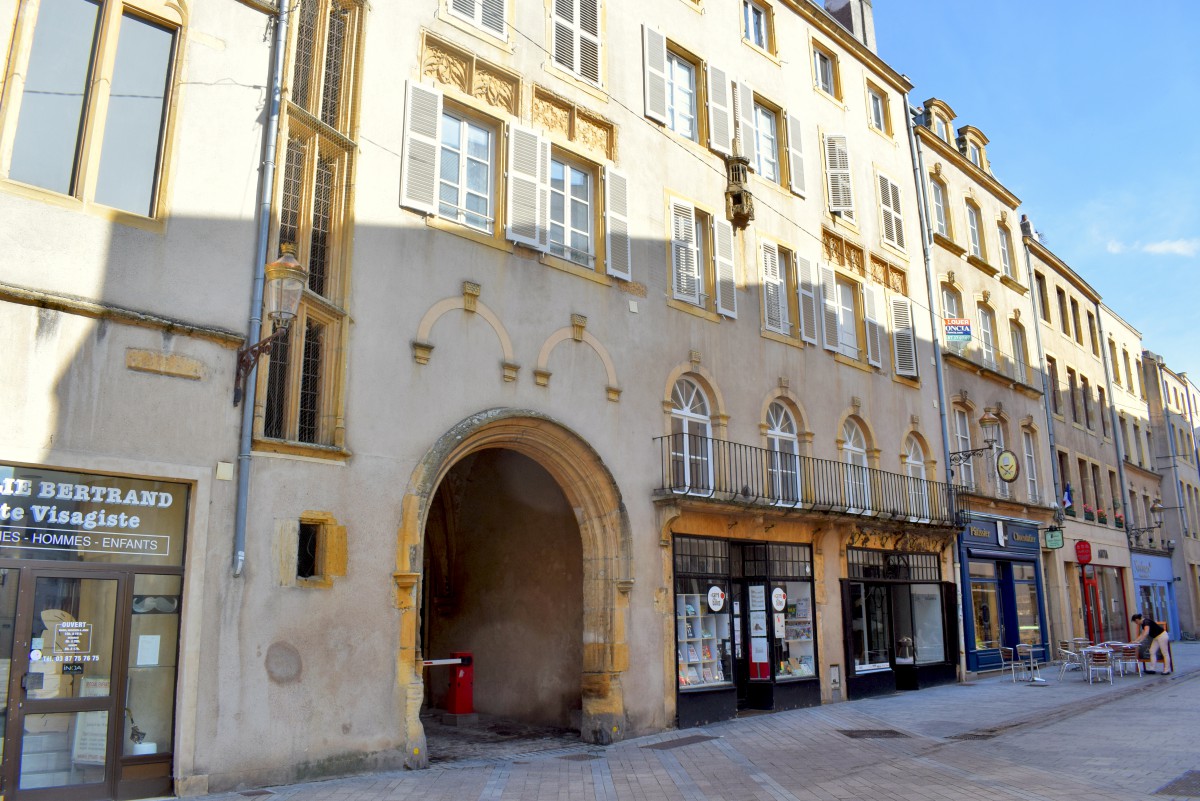
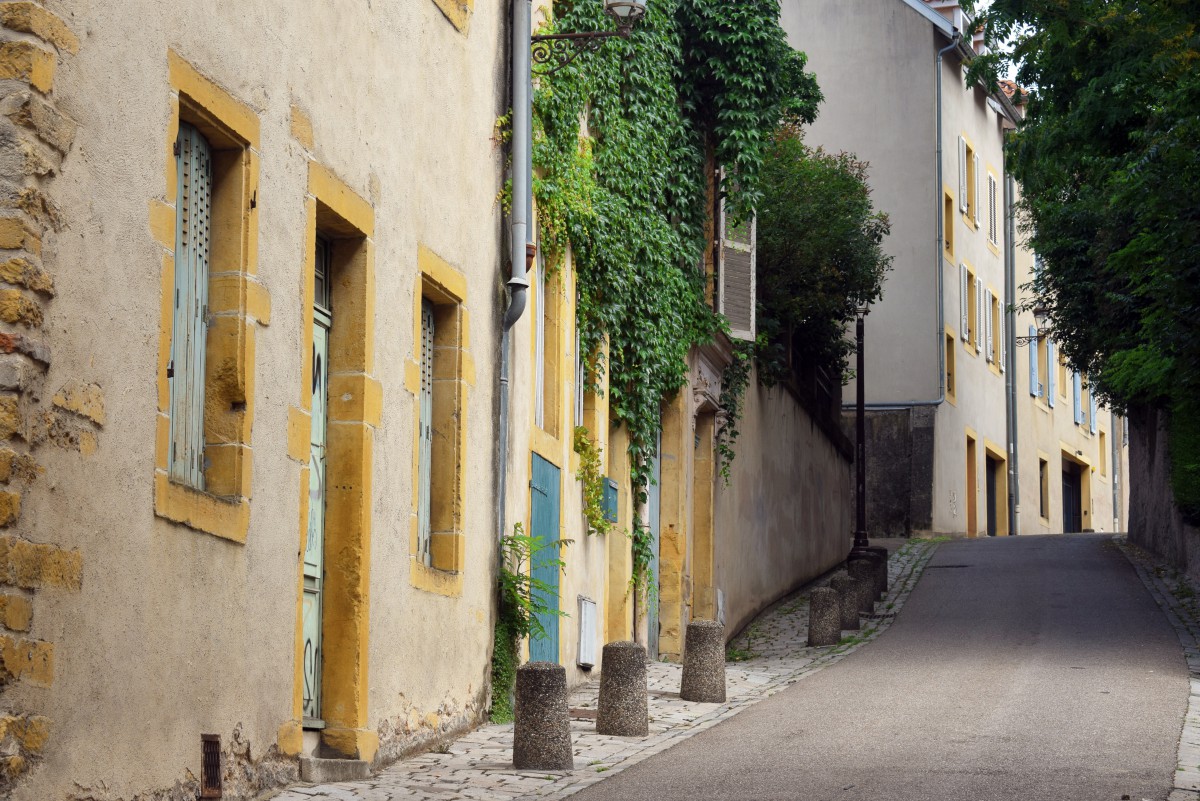
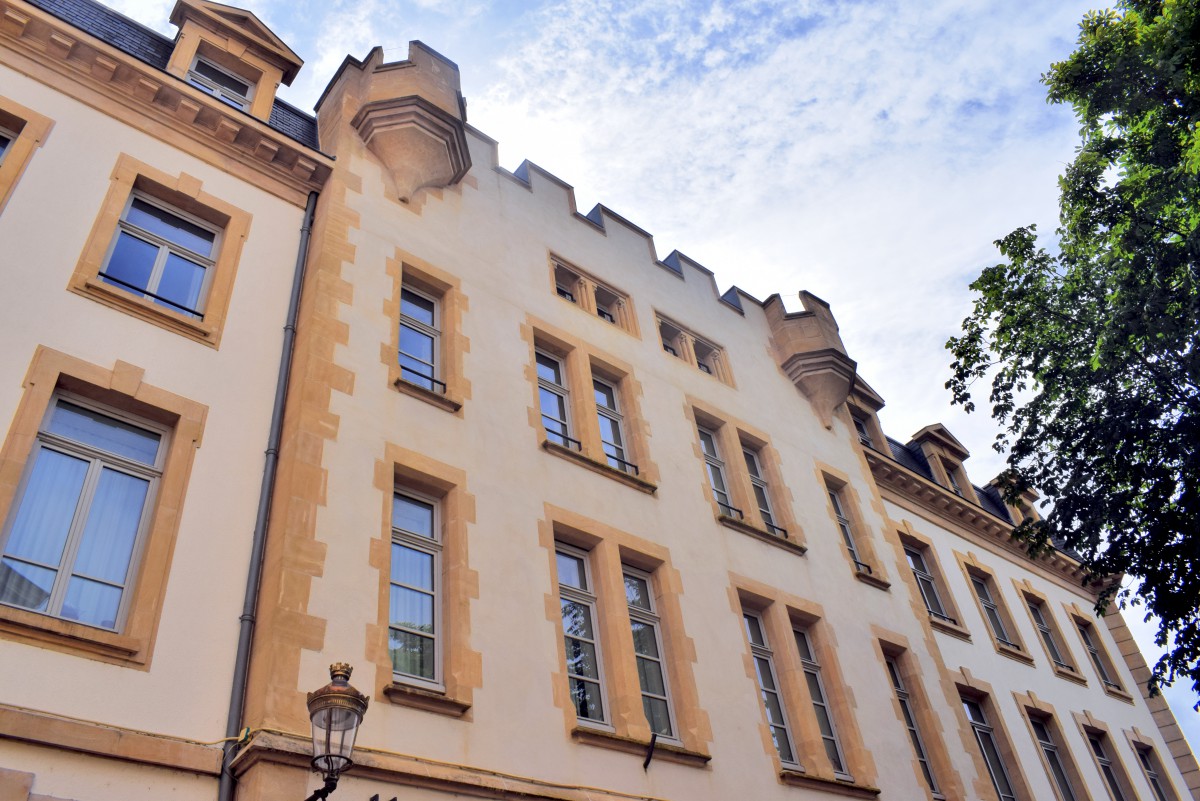
It is interesting to note that the imperial quarter created by the Germans during the annexation of the city (1871-1918) includes other building materials. Some of these are not in continuity with the traditional Metz stone (that of Jaumont); the objective was to “Germanise” the Lorraine city. Thus, pink Vosges sandstone (Central Post Office) and grey Niderviller sandstone (railway station) appeared in Metz.
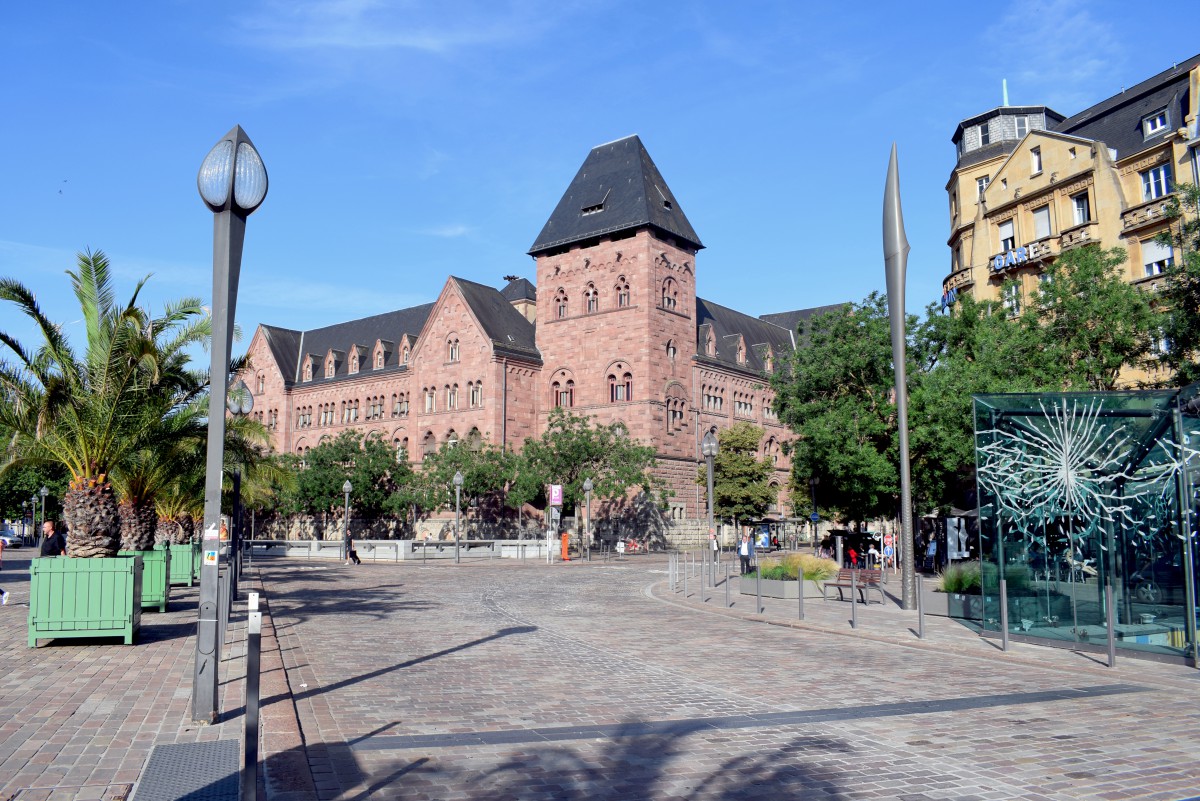

Jaumont stone in the Pays messin
Beyond the city, the houses in most of the villages of the Pays messin (region of Metz) are made of Jaumont stone. This is visible when you take the train from Nancy to Metz. From Ars-sur-Moselle onwards, the colour of the facades of the towns you pass through adopts the “Pierre de soleil”!
![Jaumont stone in the village of Vaux in the Pays messin. Photo Aimelaime [Public Domain via Wikimedia Commons]](https://frenchmoments.eu/wp-content/uploads/2022/04/Vaux-Moselle.-Photo-Aimelaime-Public-Domain-via-Wikimedia-Commons-scaled.jpg)
Jaumont stone beyond the Metz area
The golden stone can be found in several sites in northern Lorraine, as well as in neighbouring regions and countries. A few examples:
Thionville
As the Jaumont quarries are located between Metz and Thionville, it is not surprising to find several buildings made of Jaumont stone in the second-largest city in Moselle. Amongst others, we can mention the Thionville belfry, the Tour aux Puces, the castle of Volkrange,the former lords’ residence of Créhange-Pittange, the southern lock bridge of the Couronné d’Yutz and the Sarrelouis gate.
![The Créhange hotel in Thionville. Photo: Aimelaime [Public Domain]](https://frenchmoments.eu/wp-content/uploads/2021/01/Thionville-Hotel-Créhange-by-Aimelaime-Public-Domain.jpg)
![The castle of Volkrange in Thionville. Photo: Aimelaime [Public Domain]](https://frenchmoments.eu/wp-content/uploads/2021/01/Thionville-Chateau-de-Volkrange-by-Aimelaime-Public-Domain.jpg)
![The Belfry of Thionville. Photo: Aimelaime [Public Domain]](https://frenchmoments.eu/wp-content/uploads/2021/01/Thionville-Beffroi-by-Aimelaime-Public-Domain.jpg)

The castle of Malbrouck
The castle built on a rocky spur in the 15th century dominates the Manderen region on the borders of Lorraine. The General Council of Moselle restored it in the 1990s to make it one of the department’s stars attractions.
![Malbrouck Castle © Cornischong - license [CC BY-SA 3.0] from Wikimedia Commons](https://frenchmoments.eu/wp-content/uploads/2021/01/Malbrouck-©-Cornischong-licence-CC-BY-SA-3.0-from-Wikimedia-Commons.jpg)
The Basilica of Avioth
Nicknamed “the cathedral of the fields”, the Basilica of Notre-Dame d’Avioth (14th century) is a remarkable structure located in the village of Avioth, in the former county of Chiny. The church is known for “La Recevresse”, a unique flamboyant gothic building.
![Avioth © Ketounette - licence [CC BY-SA 4.0] from Wikimedia Commons](https://frenchmoments.eu/wp-content/uploads/2022/04/Avioth-©-Ketounette-licence-CC-BY-SA-4.0-from-Wikimedia-Commons-scaled.jpg)
The Vauban ramparts
The Vauban fortifications in Longwy-Haut and Luxembourg-City are also made of Jaumont stone.
![Longwy: the Vauban rampart and Porte de France © Initsogan - licence [CC BY-SA 3.0] from Wikimedia Commons](https://frenchmoments.eu/wp-content/uploads/2022/04/Longwy-Rempart-et-Porte-de-France-©-Initsogan-licence-CC-BY-SA-3.0-from-Wikimedia-Commons.jpg)
![Luxembourg © Cayambe - licence [CC BY-SA 3.0] from Wikimedia Commons](https://frenchmoments.eu/wp-content/uploads/2022/04/Luxembourg-©-Cayambe-licence-CC-BY-SA-3.0-from-Wikimedia-Commons-scaled.jpg)
The castle of Cons-la-Grandville
A few steps from Longwy, the castle of Cons-la-Grandville represents an architectural synthesis of the Romanesque and classical periods. Jaumont stone has been used since the Renaissance. Other monuments in the village are also made of Jaumont stone: the church of Saint-Hubert, the Benedictine priory of Saint-Michel and the old blast furnace.
![Cons-la-Grandville in Jaumont Stone © Targa54 (thierry caland) - licence [CC BY-SA 3.0] from Wikimedia Commons](https://frenchmoments.eu/wp-content/uploads/2022/04/Cons-la-Grandville-©-Targa54-thierry-caland-licence-CC-BY-SA-3.0-from-Wikimedia-Commons-scaled.jpg)
The Place Ducale in Charleville-Mézières
The magnificent main square of Charleville-Mézières was built between 1606 and 1624 by the architect Clément Métezeau, brother of the architect who designed his Parisian sister, the famous Place des Vosges.
![Place ducale Charleville © Ad Meskens - licence [CC BY-SA 3.0] from Wikimedia Commons](https://frenchmoments.eu/wp-content/uploads/2022/04/Place-ducale-Charleville-©-Ad-Meskens-licence-CC-BY-SA-3.0-from-Wikimedia-Commons-scaled.jpg)
![Charleville-Mézières Place Ducale © Dietmar Rabich - licence [CC BY-SA 4.0] from Wikimedia Commons](https://frenchmoments.eu/wp-content/uploads/2022/04/Charleville-Mézières-Place-Ducale-©-Dietmar-Rabich-licence-CC-BY-SA-4.0-from-Wikimedia-Commons-scaled.jpg)
![Charleville-Mézières Place Ducale © François GOGLINS - licence [CC BY-SA 4.0] from Wikimedia Commons](https://frenchmoments.eu/wp-content/uploads/2022/04/Charleville-Mézières-Place-Ducale-©-François-GOGLINS-licence-CC-BY-SA-4.0-from-Wikimedia-Commons-scaled.jpg)
Lyon
Number 3 rue Juiverie in the Old Lyon looks like a Metz facade. The reason? The Jaumont stone is used in the door and window frames.
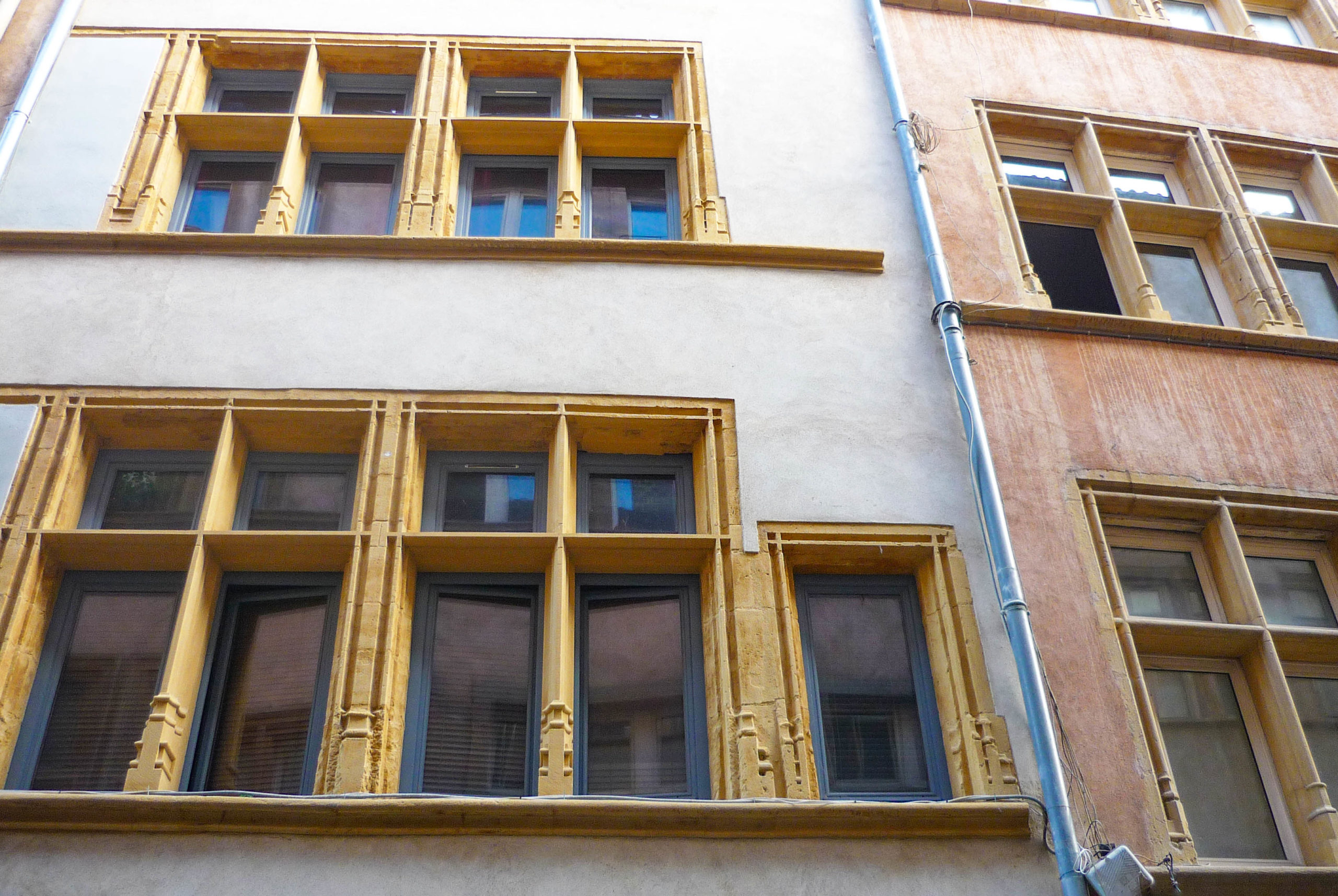
I suspect that other window frames in Vieux-Lyon are also made of Jaumont stone.
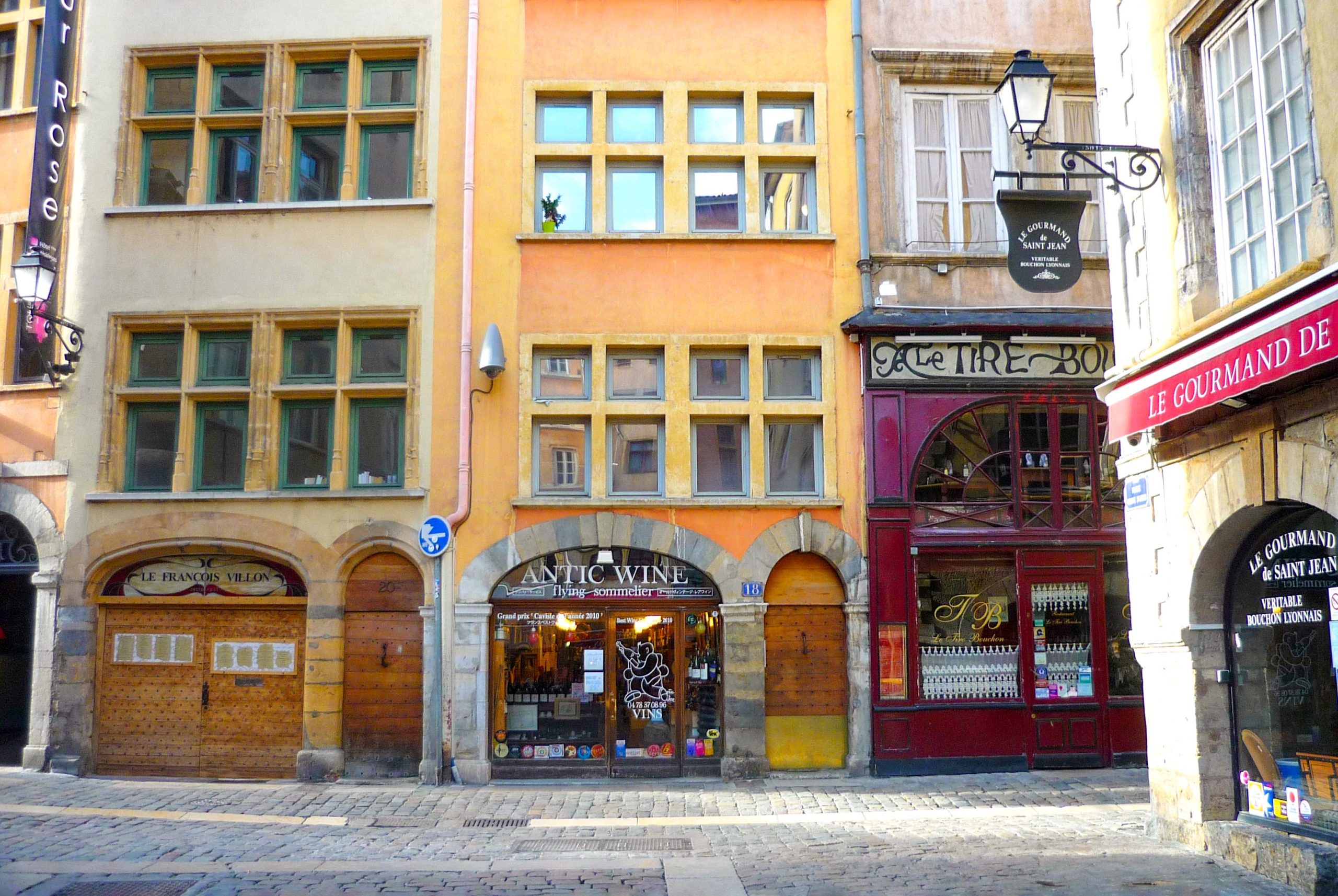
Jaumont stone in Nancy
Nancy made extensive use of Euville stone in the construction of its 18th-century Unesco-listed district (Place Stanislas, Place d’Alliance, Triumphal Arch, city gates). Meuse stone is also found in the Art Nouveau houses built by the Ecole de Nancy.
So, are there any buildings in Nancy made of Jaumont stone?
Yes, and not the least!
The Nancy railway station, built in 1856 by the architect Charles-François Chatelain.
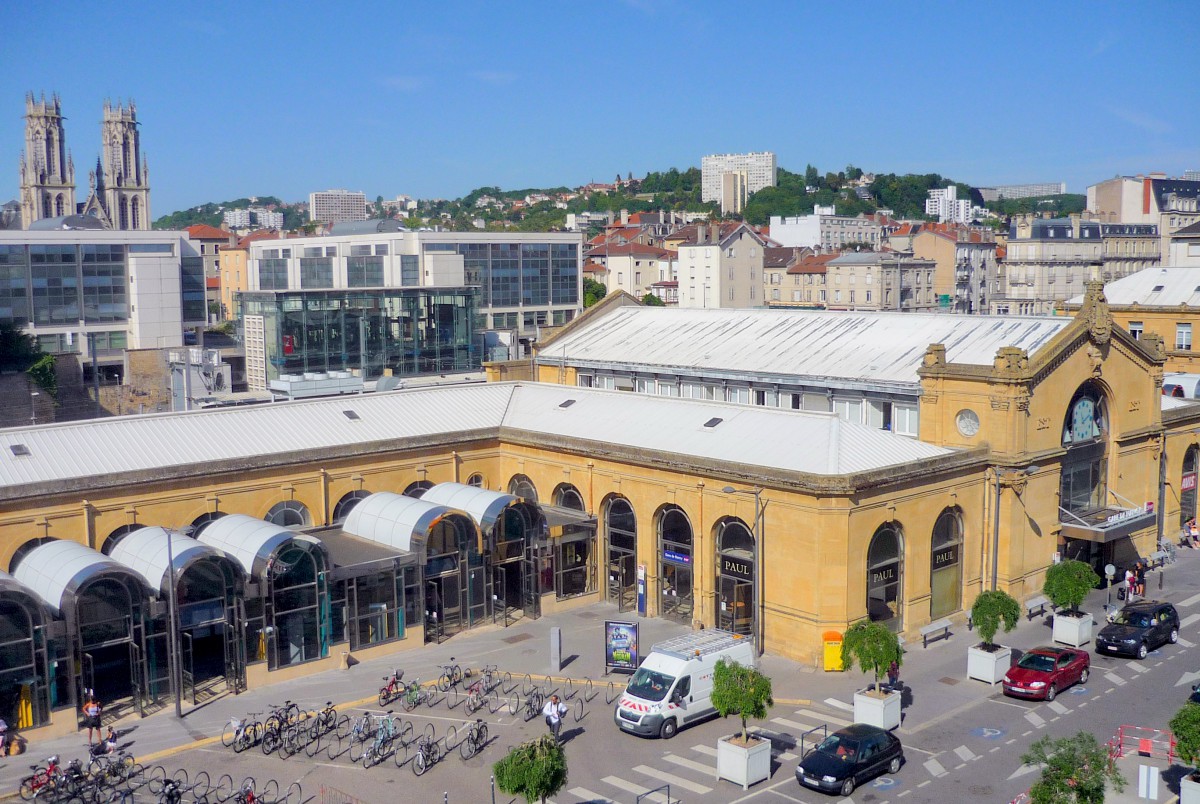
The former Nancy Tobacco Factory (manufacture des tabacs), built to the plans of Eugène Rolland between 1864 and 1870, just in time before the annexation of the Jaumont stone quarries by Germany!
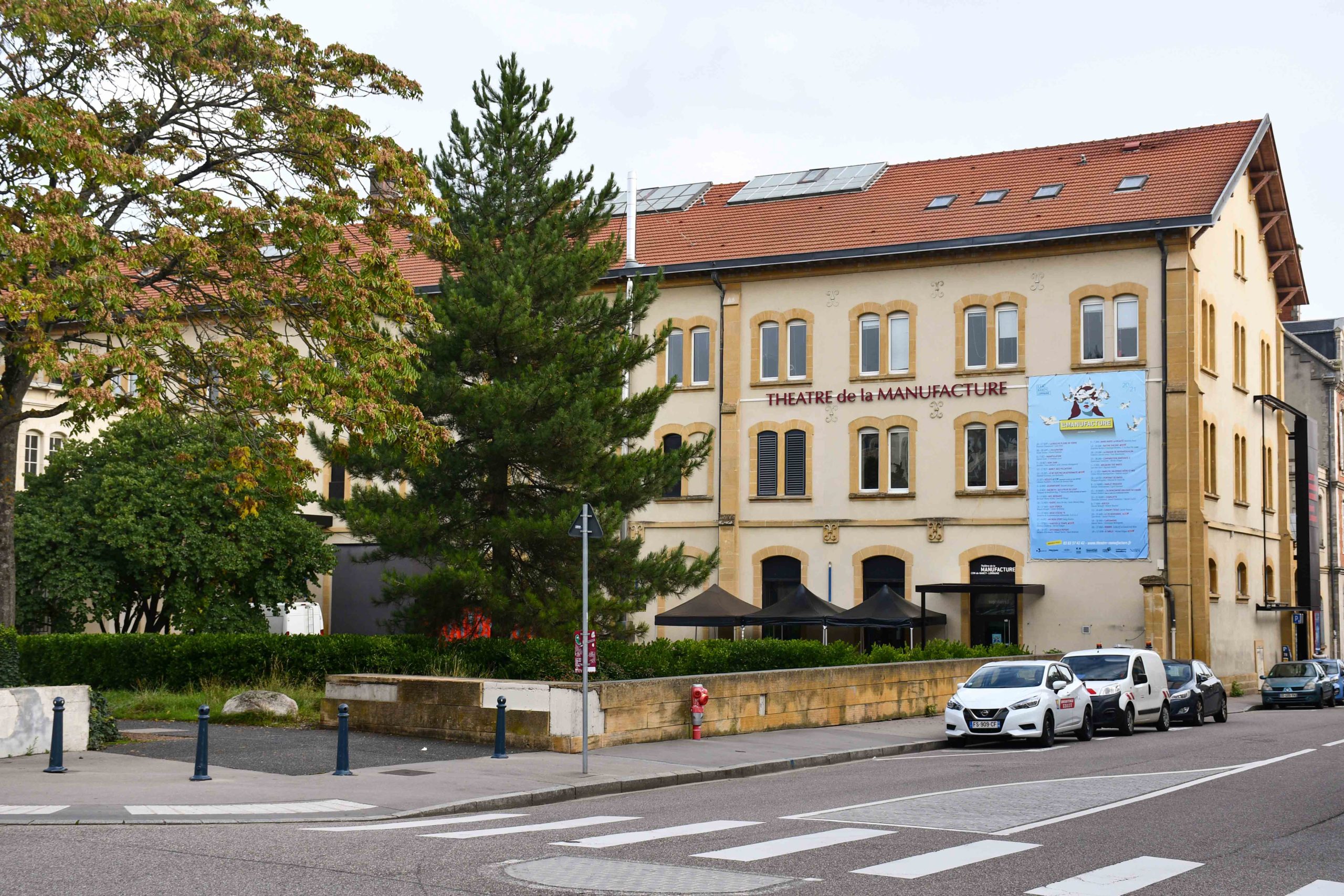
The statue of Duke Antoine nestled in the magnificent doorway of the Ducal Palace is made of Jaumont stone. It is a reproduction by Giorné Viard from 1851.
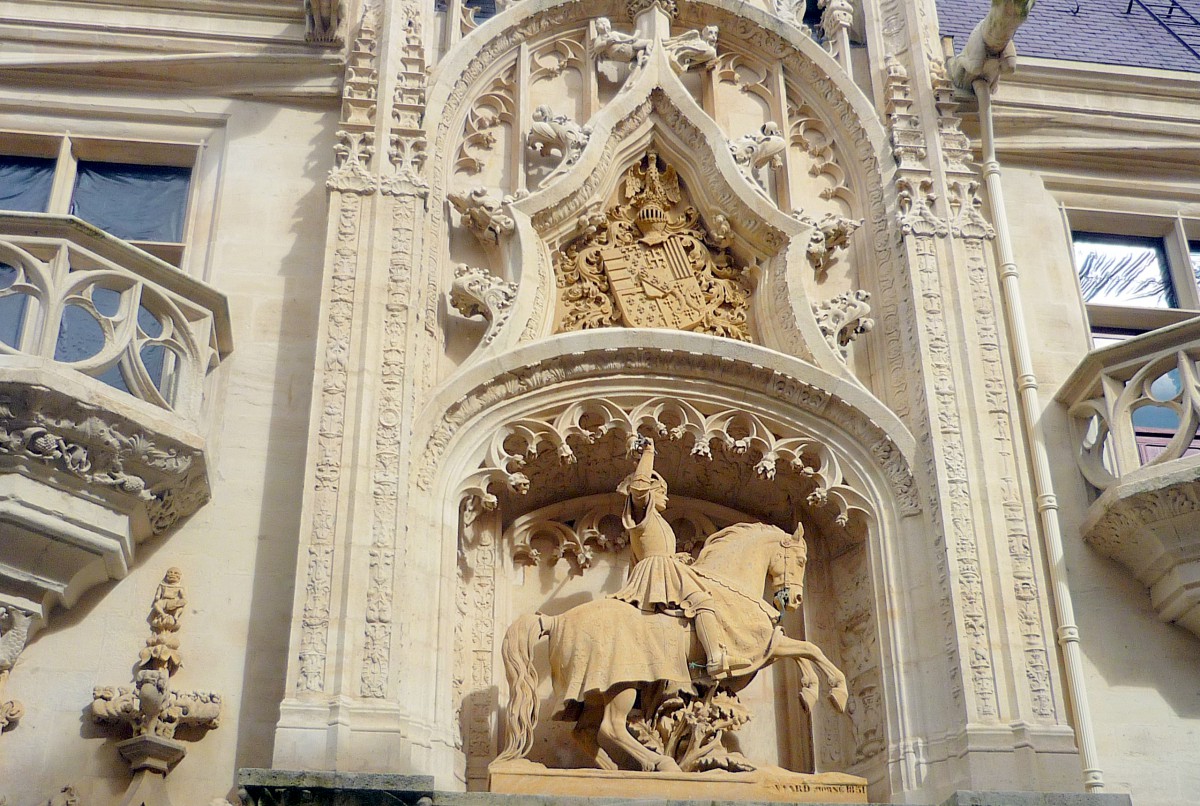
A stone of international prestige
Nowadays, the Jaumont quarries are still in operation! Each year, more than 2 million tons of limestone are extracted to produce limestone crushed stone and steel fillers. As for the extraction of dimension stone, it is concentrated on prestigious, rare and expensive products (more expensive than marble!)
Jaumont stone is still used for the restoration of Moselle monuments and for prestigious, high-end building sites.
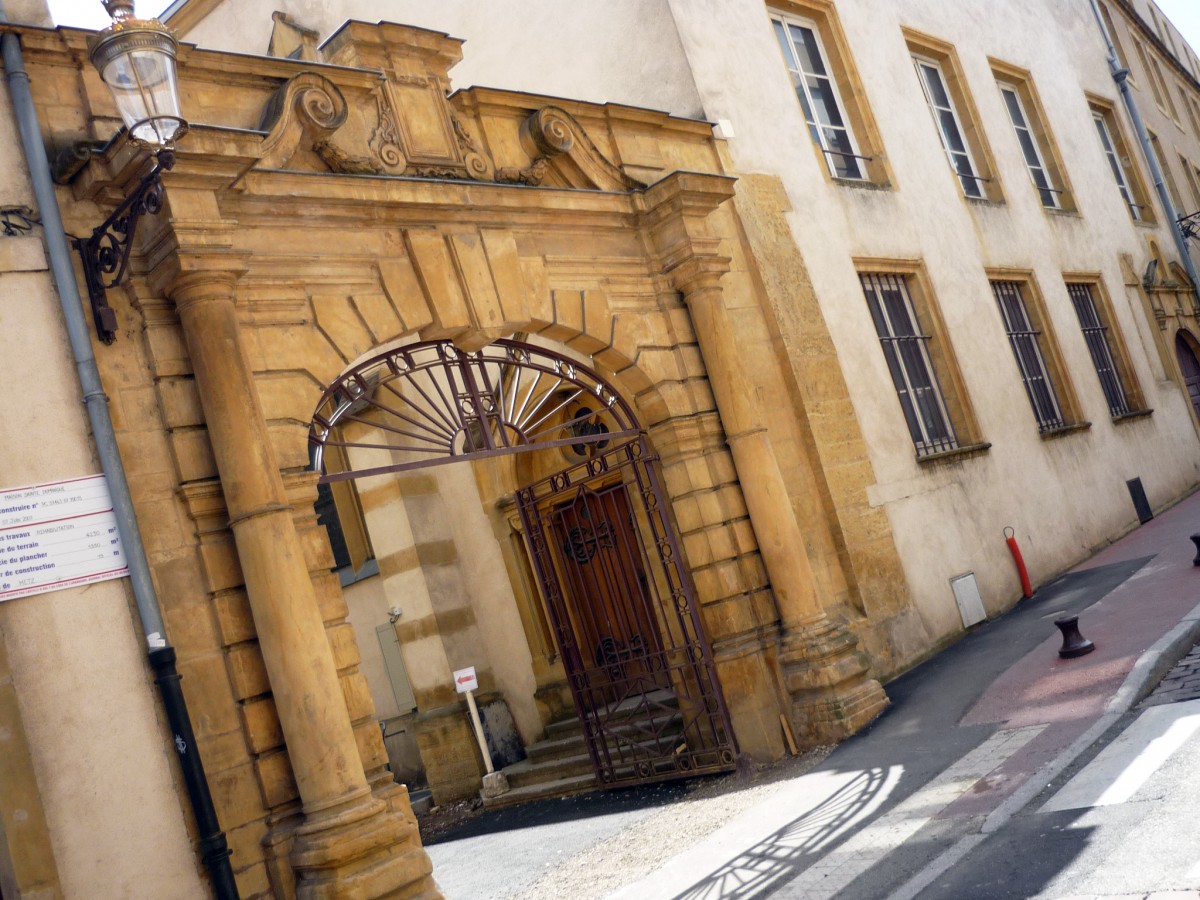
The “Pierre de soleil” can be found in Luxembourg, Belgium, Japan (façade of the Louis Vuitton shop in Osaka), the United States, Great Britain (Sainsbury’s Laboratory in Cambridge) and China (Macao Casino).
Find out more
- Read this article in French on our blog Mon Grand-Est 🇫🇷 [coming soon]
- Discover the city of Metz
- Vosges sandstone: the emblematic stone of the Rhineland
- Euville Stone: the epic story of a Lorraine stone!
- Discover the historical and cultural region of Lorraine
- The Cathedral of Metz is made of Jaumont st0ne!
- The Wikipedia article on the Jaumont stone [in French]
- The official site of the Jaumont quarries and the museum
The examples of constructions using Jaumont stone represent only a tiny fraction of the existing buildings and structures in Metz and Lorraine. If you know of any others that deserve to be mentioned in this article, please write their name in the comments below!
Jaumont stone on Pinterest
Pin it on Pinterest so you don’t forget the Jaumont stone!
